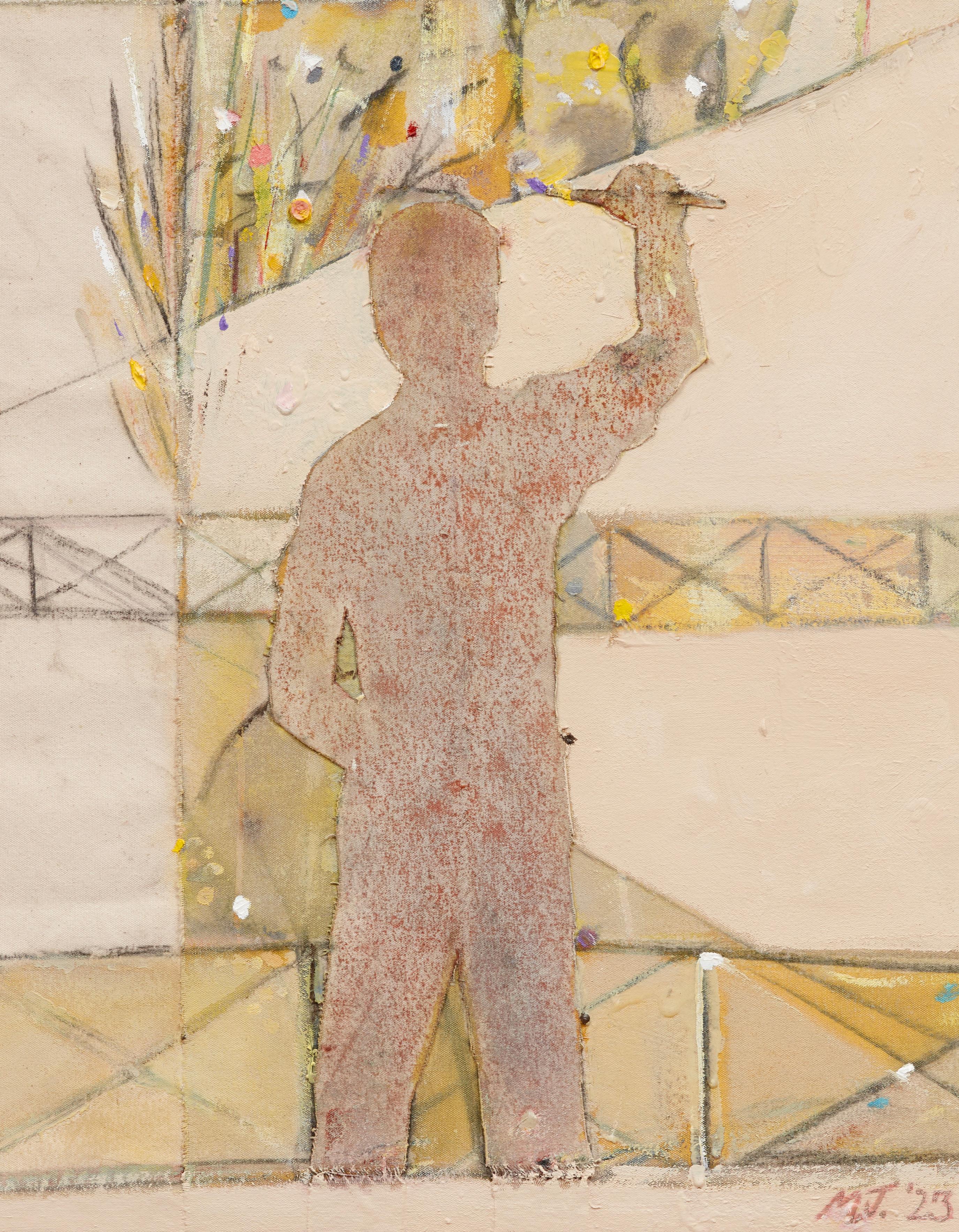
ONE THING TOUCHES ANOTHER
31 JULY — 14 SEPTEMBER 2025


31 JULY — 14 SEPTEMBER 2025
EILEEN AGAR
REMI AJANI
KAROLINA ALBRICHT
NED ARMSTRONG
CHARLES AVERY
BASIL BEATTIE
MARIA CHEVSKA
PRUNELLA CLOUGH
DENISE DE CORDOVA
ANDREW CRANSTON
MARTYN CROSS
JOSEPH DILNOT
PETER DOIG
JAMES FISHER
NICK GOSS
PHIL GOSS
SUSIE HAMILTON
TOM HAMMICK
MARCUS HARVEY
CELIA HEMPTON
ROGER HILTON
PAUL HOUSLEY
ANDRZEJ JACKOWSKI
MERLIN JAMES
KEN KIFF
DEBORAH LERNER
JOHN MACLEAN
ELIZABETH MAGILL
KATHRYN MAPLE
SCOTT MCCRACKEN
JEFF MCMILLAN
MARGARET MELLIS
ROY OXLADE
CAROL RHODES
DAN ROACH
LORNA ROBERTSON
WILLIAM SCOTT
MYRA STIMSON
GRAEME TODD
PHOEBE UNWIN
ALICE WALTER

By Emma Hill
Experience is never limited, and it is never complete; it is an immense sensibility, a kind of huge spider-web of the finest silken threads suspended in the chamber of consciousness, and catching every air-borne particle in its tissue.
Henry James. Partial Portraits (1888) ‘The Art of Fiction.’
In the late summer of 2021 I traveled into central London to see the work of Helen Frankenthaler, which was on show at the Gagosian Gallery in Grosvenor Square. It was the first exhibition I had visited since the beginning of the Covid lockdowns almost a year and a half before.
The bus followed a familiar route on which everything had become unfamiliar. When I arrived, apart from a handful of staff, I was alone in the light-filled rooms. Thirteen paintings, most slightly over the scale of my body, were hung low across the walls. Amongst them were three canvases from 1963 – Narcissus , Yolk and Sea Goddess
Enveloped in the radiant, watery surfaces of the paintings, my eyes traveled over and into their saturated skins – into surfaces that bear the imprints of the floor boards on which the artist worked, pouring pools of paint onto the flat, un-stretched canvas. My mind was filled with simultaneous and fleeting thoughts: of cave painting, Greek myth, swimming in salt water … I felt the slow release of tension I had held in my body for many months. I was palpably reminded that the experience of a painting is a form of transference.
As our daily reality becomes ever more complex, I find myself turning with increasing frequency to art to try to process the slipstream of life. I cherish the inherent truth of James Baldwin’s words: ‘what you have got to remember is that everyone you are looking at is also you.’
The ideas behind One Thing Touches Another began from a simple premise, which was to ask whether the language of painting has agency in an increasingly turbulent world. The exhibition offers a view of painting as an essential language of connection – as the physical manifestation of another’s thoughts. A form of invitation – a reaching towards.
My co-curator, Tom Hammick, is a painter. For over thirty years we have had many conversations about all
kinds of art. We share a view of painting as a vital means of human expression.
Our decision to focus an exhibition through the prism of British art was by no means to suggest that connections do not reach outwards – rather the opposite – but the UK’s recent history has forced us as a country to look back into ourselves, our class divisions, and our colonial legacy. Inevitably, these are issues that influence the thoughts of artists working in Britain today, and it seemed a particularly relevant moment to examine recent and contemporary practice in the light of this.
A text by the painter Maria Chevska suggested a way of drawing forth subtle relationships:
The common factor – one thing touches another thing
Using the language of small gestures … tenuous, empathetic, transforming, holding, listening, -
And the tensions held between bodies, and spaces …
The trust and commitment that Maya Frodeman Gallery has extended towards us has been invaluable. It has allowed for a broad view that has enabled us to bring together work by 41 artists to reflect on thoughts and cross currents in British painting that stretch back over 75 years. The selection is by no means comprehensive, nor does it seek to present the proposition of cohesive movements. It has allowed us to show that the practice of individual artists at any one moment, while inevitably effected by the wider concerns of the societies in which they live, remains in one sense hermetic. Conversely, it reveals how influence is passed on, and how in retrospect we begin to discover deep and enduring connections.
Work in the exhibition ranges from paintings by artists of the Modern British era and significant figures who came to prominence during the 1960-80s, and then moves into the present time with examples by internationally established artists and younger, emerging practitioners. Within the selection there are numerous meeting points: historic artists who have influenced, artists who have taught other artists, friends, partners, and siblings.
The British are in many ways a nation of iconoclasts, and some of our greatest artists – William Hogarth, J.W. Turner, William Blake, Samuel Palmer amongst them – followed highly individual paths within their times. We are not much given to group activity in the arts, and while artists have always gravitated towards each other, encouraged by locations, or community, the activity of painting is by nature a solitary one. This aspect – of a necessary kind of isolation – could be said to define the practice of many of the artists in this exhibition. The art historian Bryan Robertson wrote of Prunella Clough, that she was ‘forever doubtful about the point,
validity or usefulness of painting …’ Yet it is precisely Clough’s powerful sense of restraint and ambiguity that make her acutely poised images so profoundly compelling. Peter Doig’s work too, whilst operating in an entirely different pictorial vein, carries a similar sense of stilled quiescence. It is not necessarily the case that an artist’s legacy carries over in terms of style, but rather in the provocation of mood, or atmosphere.
Thematic strands run through One Thing Touches Another that relate to landscape, still life, myth-making and folklore, but what connects all the work is a sense of the artist approaching the painting as a site of perception.
The earliest work is a scrap of canvas from circa mid 1940s that Eileen Agar cut from a larger painting she later destroyed. The artist focuses our eyes on a flurry of soft pink brush strokes that are framed within a semi-circle of dynamic abstract shapes. The painting is both an image of a flower and a portal into another kind of imaginative space. The work shares kinship with many others in the exhibition, in the sense of an artist opening the viewer’s mind through the experience of a material object – Karolina Albricht’s intense, almost votive panels, Scott McCracken’s provisional arrangements of surrealist forms, or Phoebe Unwin’s enigmatic confluences of sensory phenomena, for example.
Movements in art come and go, leaving their residual traces in the works that follow, but the objecthood of a painting allows it a particular kind of autonomy. When we look at a painting, we are party not only to an artist’s thoughts but connected in real time to the intimacy of the artist’s touch.
Each generation operates from within the experience of its time. As the Second World War left its mark on artists of the 1940s, expressed in pared down forms of abstraction that took their lead from European traditions of the avant garde, British painters of the late 1950s and early ‘60s were inevitably influenced by the power, scale and confidence of the American Abstract Expressionists.
Artists like Ken Kiff and Roy Oxlade who came to prominence in the late 1970s worked in some senses against this tide, while Basil Beattie (though profoundly influenced by the work of Philip Guston and Mark Rothko) took many years to develop a personal language of painting that grafted the sensuous pleasure of material with the possibility of semiotic content.
An adherence to the philosophies of Abstract Expressionism dominated thoughts about painting in British art schools for many years, and came to be seen by younger painters of the 1980s as a form of tyranny. By the 1990s, to approach painting at all, or to regard it as a language of affirmative visual poetics, was seen as fairly redundant. The generation we describe as the Young British Artists had absorbed lessons from Pop Art and advertising. They ushered in an arch, knowing, confident era in which contemporary art became a potent
form of currency. Yet there were many young artists that continued to make paintings: Peter Doig, Merlin James, Elizabeth Magill, Carol Rhodes and Graeme Todd, amongst them.
Today we contend with a reality in which the ubiquity of technology bombards us with imagery; at the same time, it calls its veracity into question. Artists deal with this in different ways, yet many still choose painting as a site in which to explore ideas. Some incorporate tropes gleaned from computer screens – James Fisher’s paintings are constructed as a form of palimpsest, combining digital imagery with observed aspects of the natural world and of painting. Celia Hempton’s compelling images of interior spaces that originate from live feed security cameras which she uses to explore the ethics of looking and the consumption of imagery within private and public spheres.
One Thing Touches Another explores questions about legacy and influence. Sometimes, this can be the impact of seeing a particular work by an artist at a formative stage. It was interesting to discover on studio visits how painters including Deborah Lerner, Dan Roach and Phoebe Unwin had been effected by the work of Prunella Clough, for example, or how James Fisher has been inspired by the mischievous nature of Ken Kiff’s complex visual game-playing. Many of the artists featured are highly regarded for their work as educators, with lineages through teaching that include Basil Beattie to Marcus Harvey; Peter Doig to Andrew Cranston, James Fisher and Paul Housley; Tom Hammick to Kathryn Maple; Andrzej Jackowski to Alice Walter; Graeme Todd to Scott McCracken.
A powerful conjunction of works by Basil Beattie and his former student, Marcus Harvey, show two artists using forms of landscape as the means to allude to ideas about identity and memory. Both employ painting as a form of metaphor: Harvey’s monolithic image of the white cliffs of Dover speaks of a sense of nationhood. The painting’s grave and fractured surface a far cry from Shakespeare’s view of England as a ‘precious stone, set in a silver sea.’ Beattie, who witnessed the aftermath of the Second World War whilst on national service in Europe, offers a more generalized view of vistas, stacked curiously within a framing device. Our gaze is led through a series of portals to simple marks that read as horizon lines, train tracks, fields. They are paintings that evoke meditations about past histories and unchartered territories – internal scapes made visible through the manipulation of material.
Andrew Cranston says of painting, it ‘is an act of remembering and forgetting, covering and uncovering, tracing and retracing, getting lost and finding a way.’
Painting as a way of thinking – of remembering and forgetting … getting lost and finding a way.
EmmaHillfoundedEagleGallery/EMHArtsinLondonin1991.Throughouthercareer,shehaschampioned emerging artists through innovative exhibitions, artist publications and off-site installations. Renowned as oneofLondon’spioneeringalternativeartspacesintheearly1990’sEagleGalleryhasnurturedtalentsnow celebrated globally. Hill is currently a guest curator at Turps Gallery, London and has curated institutional exhibitions including Ken Kiff: The Sequence at the Sainsbury Center for Visual Art (2018) and Stephen Chambers;TheCourtofRedondaforthe57thVeniceBiennale(2017).Hervisionaryinitiativeshavefostered collaborations with esteemed institutions including Aldeburgh Music, Sadler’s Wells Theatre, the Scuola InternazionalediGrafica,Venezia,andnowMayaFrodemanGallery.

’The common factor – one thing touches another thing Using the language of small gestures ... tenuous, empathetic, transforming, holding, listening,And the tensions held between bodies, and spaces ...’
- Maria Chevska, 2023

Eileen Agar (1899-1991) was an Argentine-British painter who studied at the Slade School of Art in the early 1920s before moving to Paris in 1928 with her husband, the writer Joseph Bard. In France, she met the founders of the Surrealist movement, including André Breton and Paul Éluard. From the 1930s onwards she began making work based on the imagination, transforming the everyday into the extraordinary.
Agar exhibited in the London International Surrealist Exhibition in 1936 and in international exhibitions throughout the 1930s. “She painted scenes of indelible strangeness, constructed collages out of wallpaper, foliage and lino, fashioned ceremonial hats – including one to wear when eating bouillabaisse, made from an upturned cork basket stuck with crustacean shells” (Laura Cumming). Her practice was broad, spanning painting, sculpture, photography and collage, fusing abstraction with imagery from classical art, the natural world and erotic pleasure. Between 1946 - 1985 she had 16 solo exhibitions and her later works explored Tachist abstraction, which was considered to be a response to American Abstract Expressionism. Agar’s work was the focus of Angel of Anarchy – a retrospective held at the Whitechapel Gallery, London in 2021.
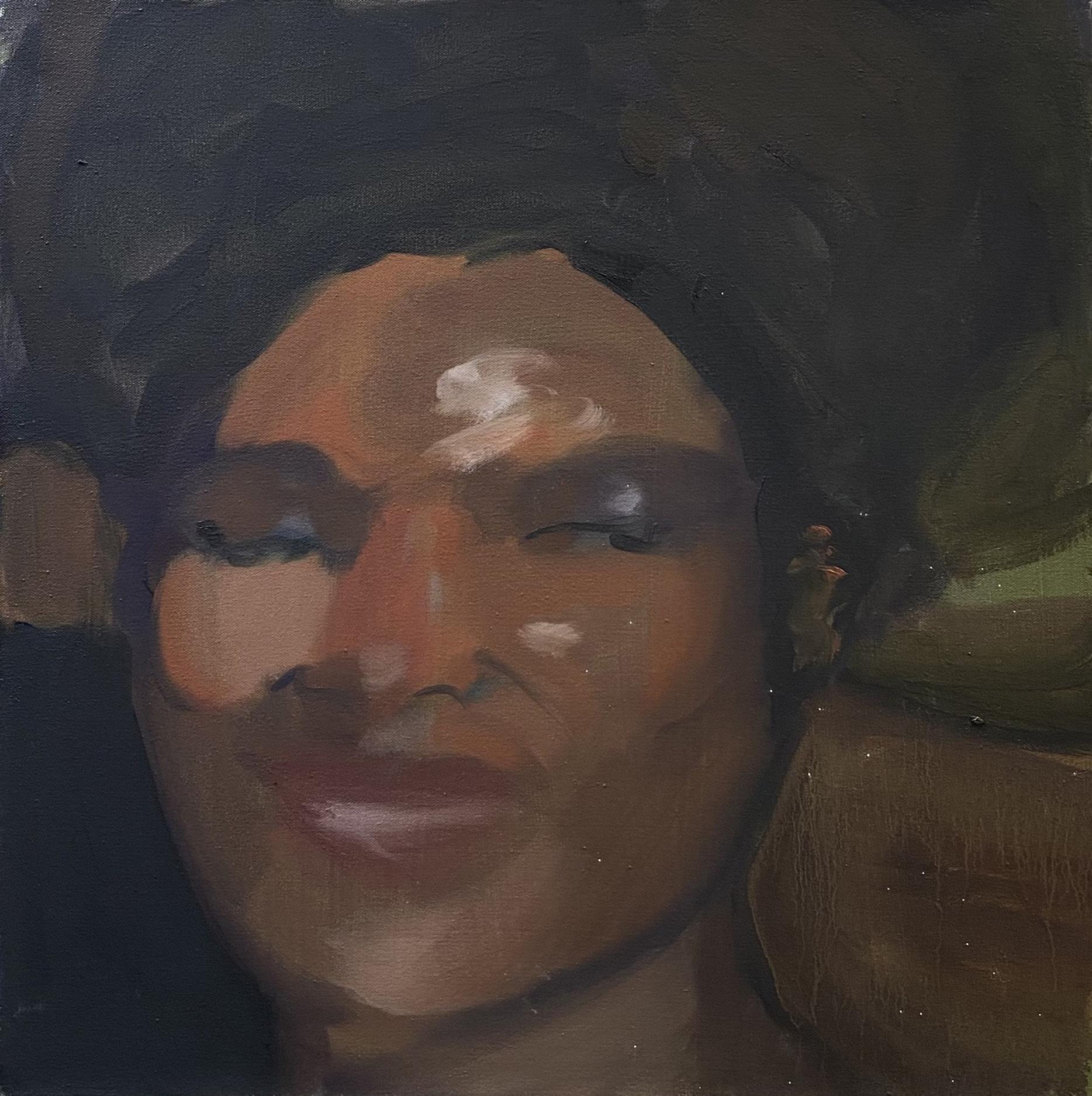
Remi Ajani (b. 1984) graduated with distinction from the Slade School of Art in 2022, where she was awarded the Almacanter Scholarship. She has held solo exhibitions with Sid Motion, London (2023); Travesia Cuatro, Mexico City (2024) and Jahn und Jahn, Munich (2025). Her group exhibitions include ‘Memories of the Future,’ Almine Reich, London (2024); ‘Abstract Color,’ Marlborough Gallery, London (2022) and ‘Greatest Source of My Longing,’ Barbara Thum m, Berlin (2022).
Ajani’s paintings oscillate between subject and gesture, image and materiality. The work is initiated by found imagery sourced from her family’s photo archives which she uses as the basis for images that explore identity, mythology and the collective experience. “Not to say they are self portraits. It’s about me as an event, and what I am learning to create an image, versus what I am witnessing.”

Karolina Albricht (b. 1983) graduated with an MA from The Academy of Fine Arts, Krakow, Poland in 2008 and completed a Turps Studio Program in 2020. She currently lives and works in London. She has exhibited in over 70 group exhibitions in the UK and Europe since 2008, including ‘Unreal City: Abstract Painting in London’ at Saatchi Gallery (2024), and won the Waverton Art Prize in 2024. Her solo exhibitions include ‘Losing the Image,’ JGM Gallery, London (2024) and ‘In Mystery, Worlds Collide,’ La Bibi+Reus Gallery, Palma (Sept. 2025).
Albricht’s multi media paintings explore ideas about space, movement and time. She is interested in producing painted objects that act as a form of aperture, dissonance or syncopation. Large scale and small, they are deeply connected to the body, and to the rhythms of music and dance. “Body being the agent of painting but also the nexus of seeing, the kind of seeing that calls for the entirety of your senses to participate.” Recent work examines ideas that stem from eastern orthodox iconography where a central image is surrounded by related scenes. “It’s a fascinating concept of conflating different points in time and space, but also different ideas of how an image can function: as a device of storytelling, didactic narrative, and as a portal – a transmitter of the divine.”
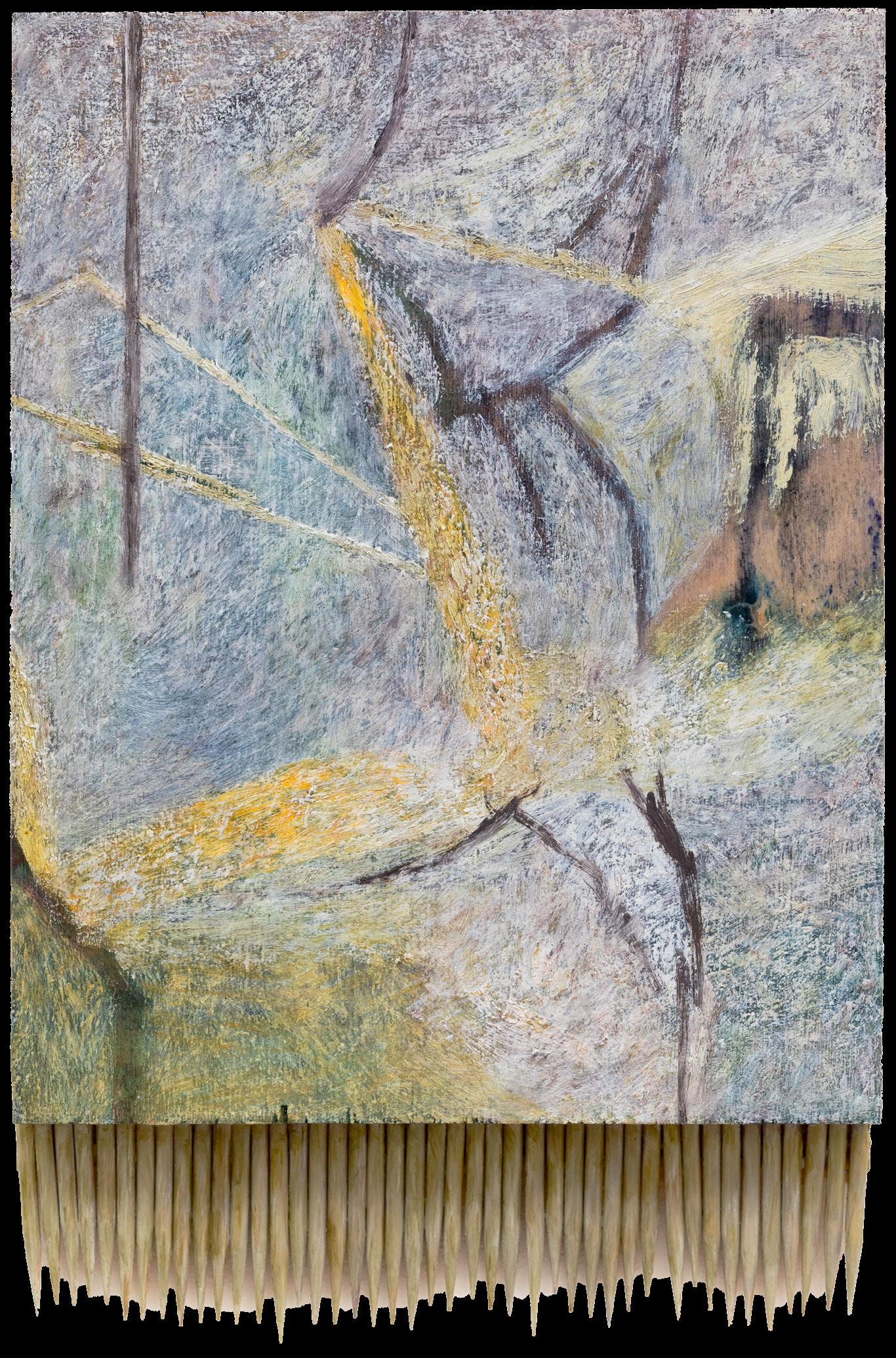

Ned Armstrong (b.1992) studied at City and Guilds, London and Edinburgh College of Art before completing the Turps Painting Program in 2021. His solo exhibitions include ‘Wake,’ South Parade, London (2023) and ‘Eyeful, Mouthful, Peaceful,’ A.P.T. Gallery, London (2022), and he has exhibited in group exhibitions including ‘Conveyer,’ Morgan Fine Arts, New York (2018), ‘Bloomberg New Contemporaries,’ South London Gallery (2021) and ‘Hand in Glove,’ A.P.T. Gallery, London (2022). In 2019 he won the Andelli Prize at the Wells Open Exhibition.
Armstrong’s paintings are developed from observed scenes in a process that often involves the disruption of the original image. Early work involved tearing up and collaging layers of painted papers and found material. More recent work gleans incidental imagery from the urban scene. “Drawing drags these forms back to the studio for further regurgitation. People and place shift between reality and imagination, photographs shift into short hand and recognizable forms disintegrate into abstraction. Disparate places/people/objects are cajoled together, creating a vision of the world between fantasy, memory and reality.”

Charles Avery (b. 1973) is one of Scotland’s most highly regarded contemporary artists, who is known for his on-going twenty year project The Islanders – a detailed portrayal of the inhabitants, topography and culture of a fictional island, formed through drawings, writings, objects, architecture and design. The project has been described as a meditation on the central themes of the philosophy of art making, and on the colonisation and ownership of the wor ld of ideas.
Avery represented Scotland at the 52nd Venice Biennale in 2004 and iterations of The Islanders have been exhibited at the 16th Istanbul Biennale (2019), the Kochi-Muziris Biennale, Kerala (2017) and the Scottish National Gallery for Modern Art as part of the NOW series of exhibitions (2019).
His work is held in many public collections including Arts Council England, Museum Boijmans van Belinigen, Rotterdam; National Galleries of Scotland, Edinburgh and Tate Modern, London. He has had numerous international solo exhibitions including ‘The Eidola, Pigs and Blades of the Inner Vast,’ Grimm, New York (2025), ‘Hunter Returns / goes away from,’ Grimm, Amsterdam (2022) and ‘The Gates of Onomatopoeia,’ Ingleby, Edinburgh (2019).

Basil Beattie (b. 1935) graduated from the RA Schools in 1961 and he was elected as a member of the Royal Academy in 2006. A long-time tutor at Goldsmiths College, over a sixty-year career he has become regarded as one of Britain’s foremost abstract painters. His early work was influenced by the formal tenets of American Abstract Expressionism (in particular the work of Mark Rothko and Barnett Newman), but in the late 1980s he began to explore a lexicon of primitive pictograms – of ladders, tunnels, thresholds and towers – that allowed him to explore language alongside gesture and materiality within his paintings.
Beattie’s work has featured in 46 solo exhibitions including ‘A Passage of Time,’ Royal Academy of Arts, London (2018); ‘When Now Becomes Then,’ MIMA, Middlesborough (2016); ‘Paintings from the Janus Series II,’ Abbot Hall Art Gallery, Cumbria (2010) and ‘Basil Beattie: BP New Displays’ Tate Britain, London (2007). His work is represented in many public institutions including Arts Council England, Birmingham City Art Gallery, Contemporary Art Society, London; Tate, London and Whitworth Art Gallery, Manchester.


Maria Chevska (b. 1948) is a British born artist who trained at the Byam Shaw School of Art, London (1970-74). She has won a number of awards for a practice that encompasses painting, sculpture and installation, including the Austin Abbey Award, British School at Rome in 1994. From 1990 - 2017 she was a Professor of Fine Art at the Ruskin School of Art, University of Oxford. Her work is held in collections including the Arts Council, British Council, and the Contemporary Art Society, DACS, and in 2016 she was awarded an Art360 Foundation UK grant to make a n archive of her work.
Chevska works at the heart of a rich historical relationship between art and language. Deeply influenced by literature and poetry, past paintings have incorporated text within their surfaces. Her modestly scaled oil paintings on canvas appear like fragments of narratives that invite the viewer to ‘decipher a story that remains perpetually deferred.’ Often arranged in tandem with three dimensional objects, or abutted together in large scale installations, painterly gestures are extended across the supports, emphasising connection and duration in a l iteral and philosophical way.
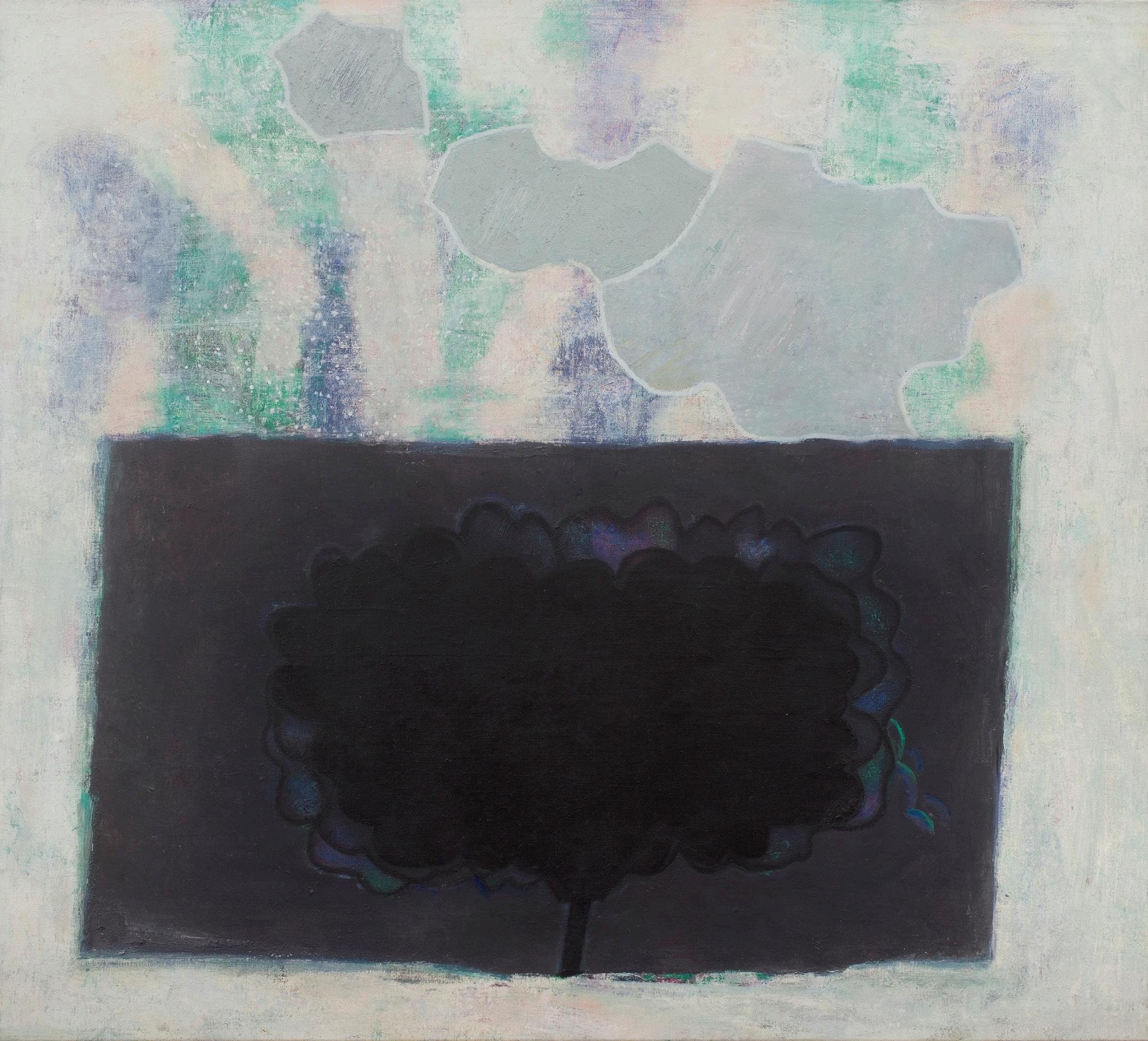
Prunella Clough (1919-1999) is a highly regarded British artist whose distinctive later abstract works have influenced many notable painters from younger generations. Widely viewed as one of the most singular and significant British artists of the modern post-war period, she found her subject matter by touring London’s industrial wastelands – docks, power stations, factories and scrapyards – creating gritty, urban images. Her work encompassed paintings, collages, drawings, and graphics that increasingly centered on the components of the urban landscape as her art shifted away from representation through various influences, including cubism and European abstraction. “In her paintings subjects previously deemed unworthy of serious consideration in art – the detritus of street and gutter, manual labour, the color of plastics – are transformed into images of compelling mystery and beauty.”
Niece of the architect Eileen Gray, Clough was born into a creative family and trained at Chelsea School of Art in the late 1930s under tutors including Henry Moore and Ceri Richards. During the second world war she drew charts and maps for the Office of War Information and formed friendships with a group of artists including Michael Ayrton, John Craxton, John Minton, Keith Vaughan and the poet Dylan Thomas. She held significant solo exhibitions from the the 1940s onwards including Whitechapel Art Gallery, London (1960), Arnolfini, Bristol (1968), Scottish National Gallery for Modern Art, Edinburgh / Serpentine Gallery, London (1976) and Camden Arts Center, London (1996). In 1999 following an exhibition at Kettle’s Yard, Cambridge, she won the Jerwood Painting Prize, three months before her death at the age of 80. Tate Britain mounted a major exhibition of her work in 2007. Her work is represented in major institutions including the Victoria and Albert Museum, London; Tate Gallery, London; British Museum, London; Museum of Modern Art, New York; Art Gallery of New South Wales, Australia; Scottish National Gallery of Art, Edinburgh; Walker Art Gallery, Liverpool; Wakefield City Art Gallery, Yorkshire.
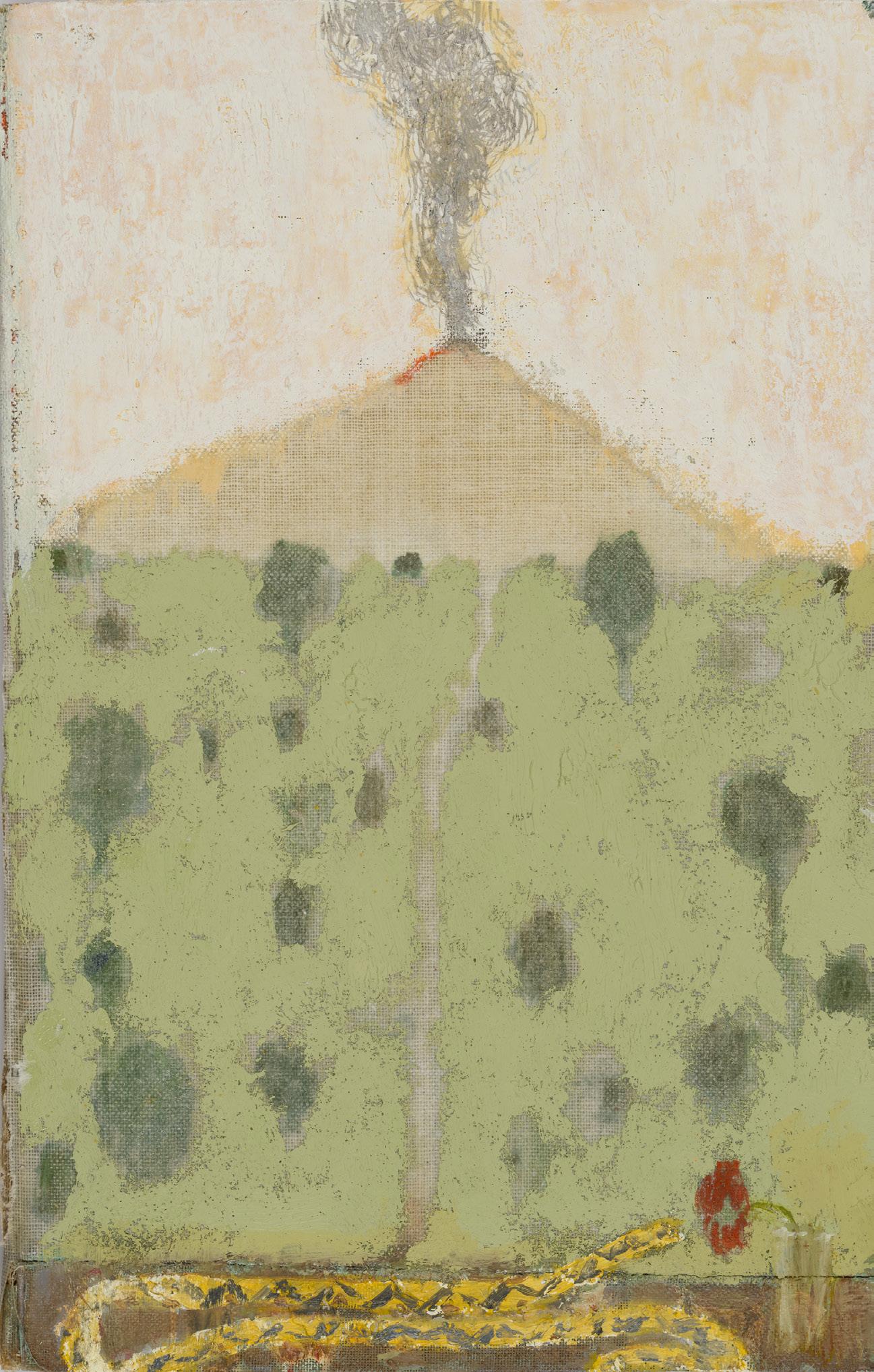
Andrew Cranston (b. 1969) was born in Hawick on the Scottish Borders and now lives and works in Glasgow. A painter-storyteller whose quiet, mediative images have gained increasing attention over the last decade, he studied at Grays School of Art, Aberdeen and completed postgraduate studies at the Royal College of Art, where he was taught by Peter Doig.
Painting for Cranston “is an act of remembering and forgetting, covering and uncovering, tracing and retracing, getting lost and finding a way.” Working in traditions that recall Bonnard and Matisse, his images coalesce in the process of making - emerging gradually through the manipulation of materials: layering, lacquering, bleaching and collaging. He is constantly re-working his way into images that seem to shift backwards and forwards in time.
His paintings are held in collections around the world, including: Loewe Foundation, Madrid, Spain; He Art Museum, Shunde, China; the Huamo Museum, Suzhou, China; Royal College of Art, London, UK; Unilever Collection, London, UK; Hawick Museum, Royal Scottish Academy, Edinburgh, UK; National Gallery of Scotland, UK; Art Gallery of New South Wales, Sydney, Australia; Hall Art Foundation, Vermont, USA; Institute of Contemporary Art, Miami, USA; Portland Art Museum, Oregon, USA and the Aishti Foundation, Beirut.
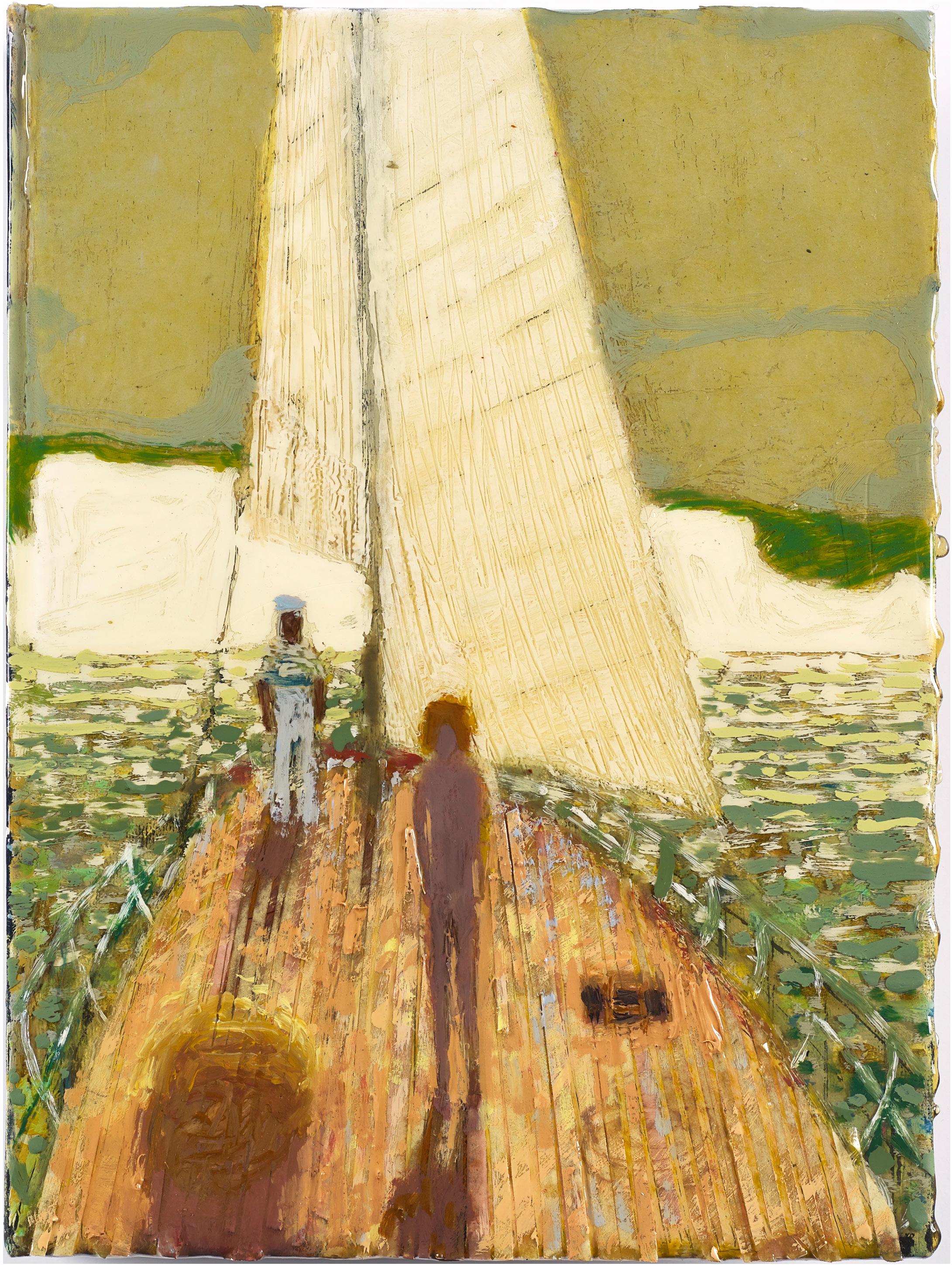


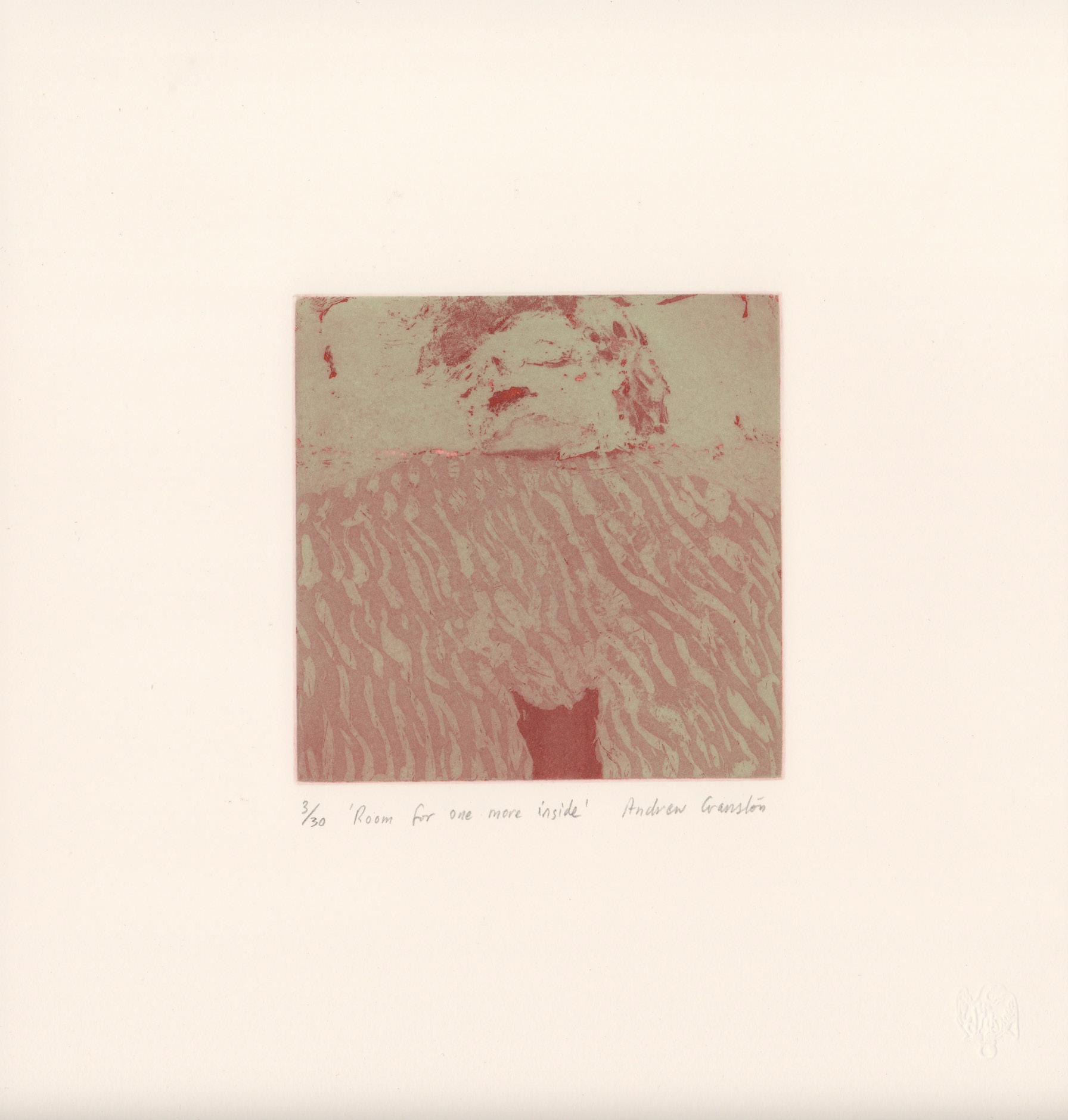
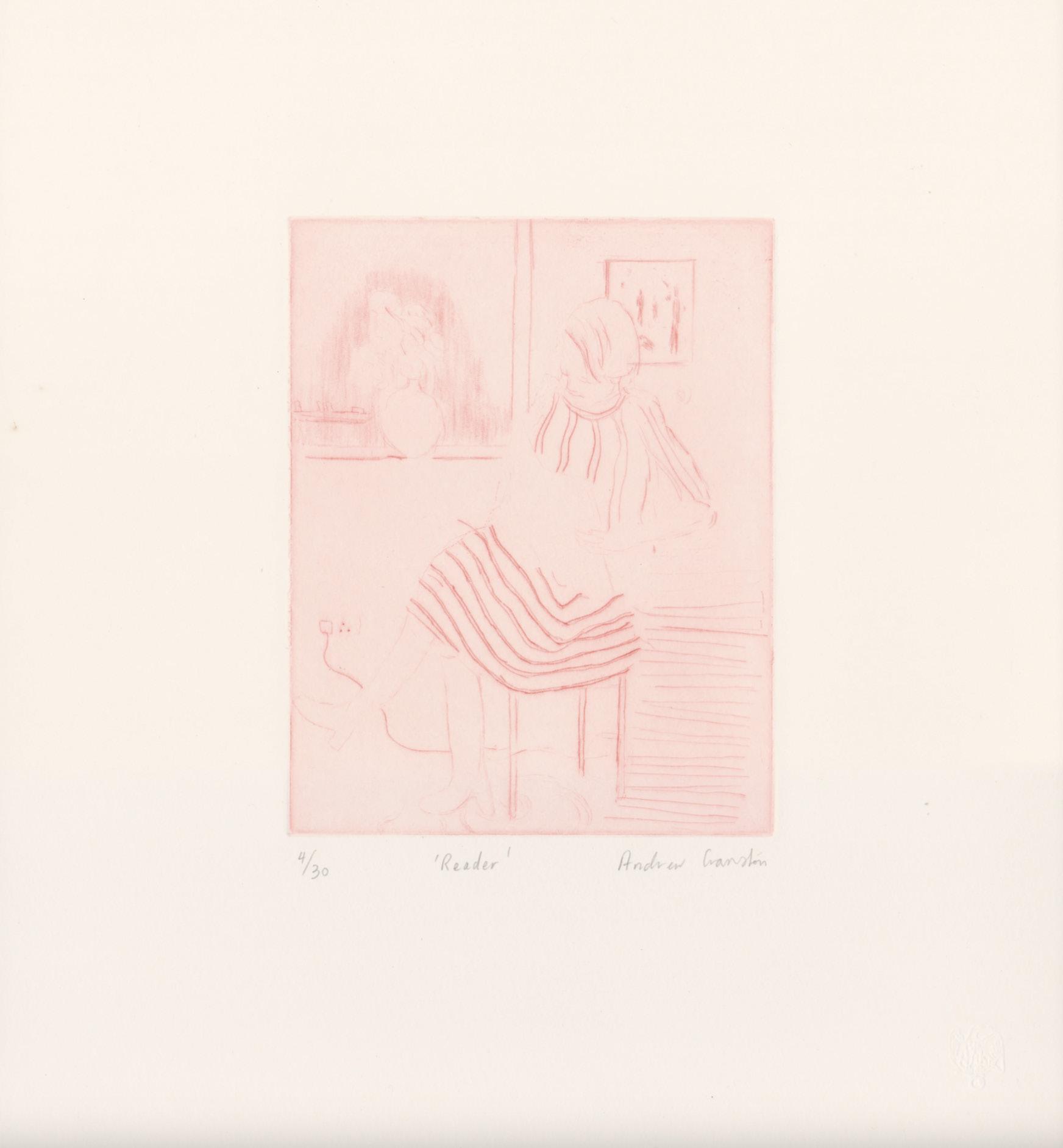
18
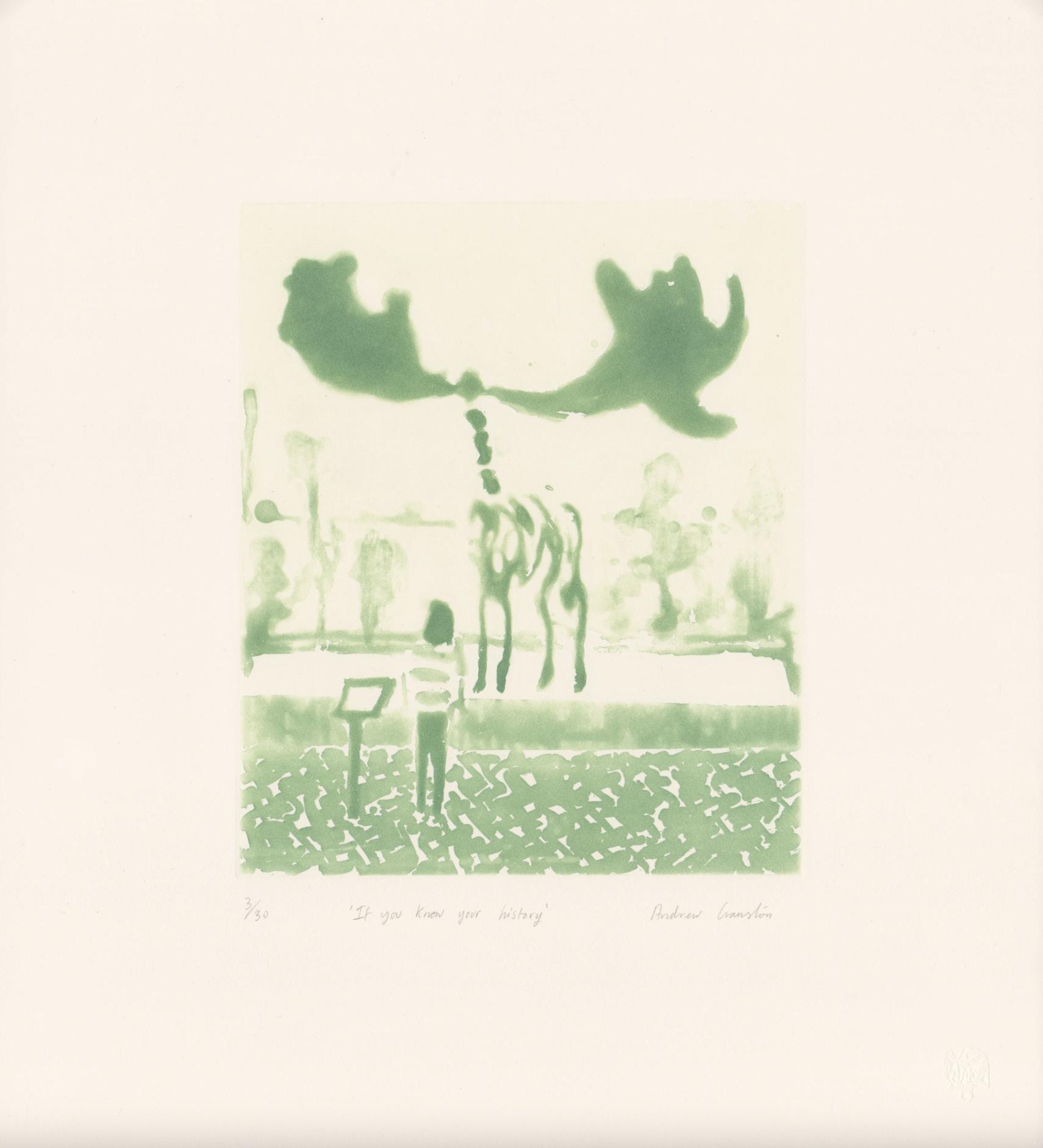

Martyn Cross (b. 1975) trained at Bath Spa University and lives and works in Bristol. For twenty years, his practice ran alongside working as a book seller, and his studio reflects a wide range of influences from images of medieval wall painting, old English churches, the work of Forest Bess, Cecil Collins and William Blake, to science fiction books and walking sticks. His paintings bear recurrent motifs – billowing clouds, tumbling waterfalls, oversized pointing fingers and bright suns – that conjure illusions of an imagined and immersive world. Biomorphic landscapes that speak to mythologies, but with narratives that are knowingly ambiguous. Familiar and mysterious, quiet and epic, scale and irregularity in proportion puzzles the viewer.
Cross has exhibited nationally and internationally with recent solo exhibitions including Hales London (2024); Marianne Boesky, New York (2023) and Ratio 3, Los Angeles (2021). His work is held in the collections of Arts Council England, Institute of Contemporary Art, Miami, USA and NN Contemporary Art, Northampton, UK, amongst others. He was shortlisted for the John Moore Painting Prize 2023 and is participating in The Roberts Institute of Art Residency, Scotland from July to August 2025.

Denise de Cordova (b. 1957) was born in Birkenhead and studied at Brighton Polytechnic (197780) and the Royal College of Art, London, where she attained an MA in Sculpture in 1983. She was awarded a Scholarship to the British School at Rome in 1983 and she was the first Henry Moore Foundation Fellow at Camberwell School of Arts (1984 - 85). As a Fellow and part time tutor of more than 30 years at the Royal College of Art, she has been an influential teacher to younger generations of artists. She was recently a subject of the ‘Artists Lives,’ an oral history project, part of the National Life Stories at the British Library and she became a member of the Royal Society of Sculptors in 2015. She has exhibited in numerous solo exhibitions including ‘Confluence,’ Museum of St John, London (1995) and ‘Congregation,’ Jesus College, Ca mbridge (2013).
De Cordova’s work plays with ambiguities – there is a tension between notions of surface embellishment being at odds with what lies beneath. By grouping and regrouping objects, her narratives adapt fluidly to different environments. Within their fabricated forms and painted surfaces, her sculptures hold allusions to many literary genres, from magical realism, landscape writing and classical novels, to ancient myth and folklore tales. She describes the work as the embodiment of real and imagined space, a nexus for lived experience, re-readi ngs, and collected stories.
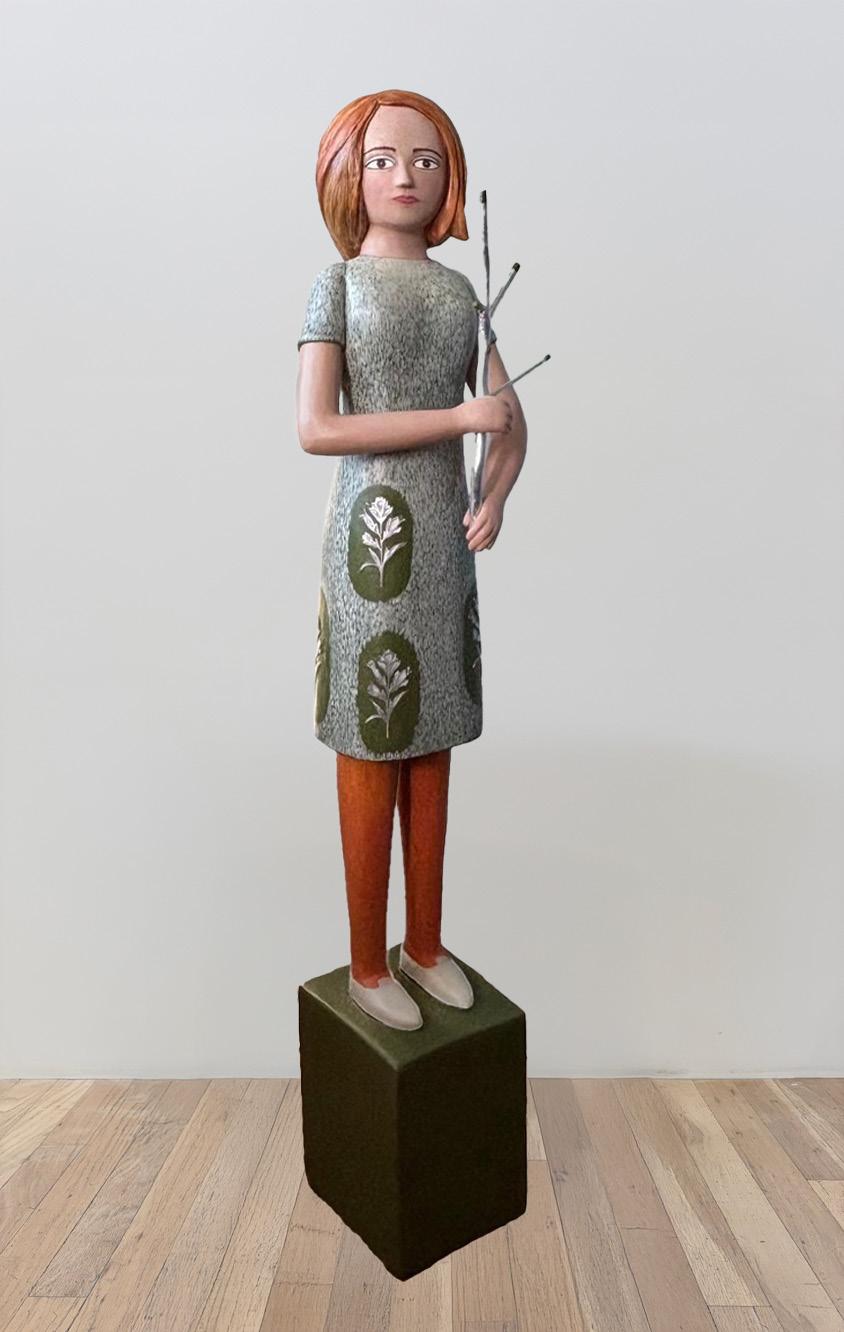
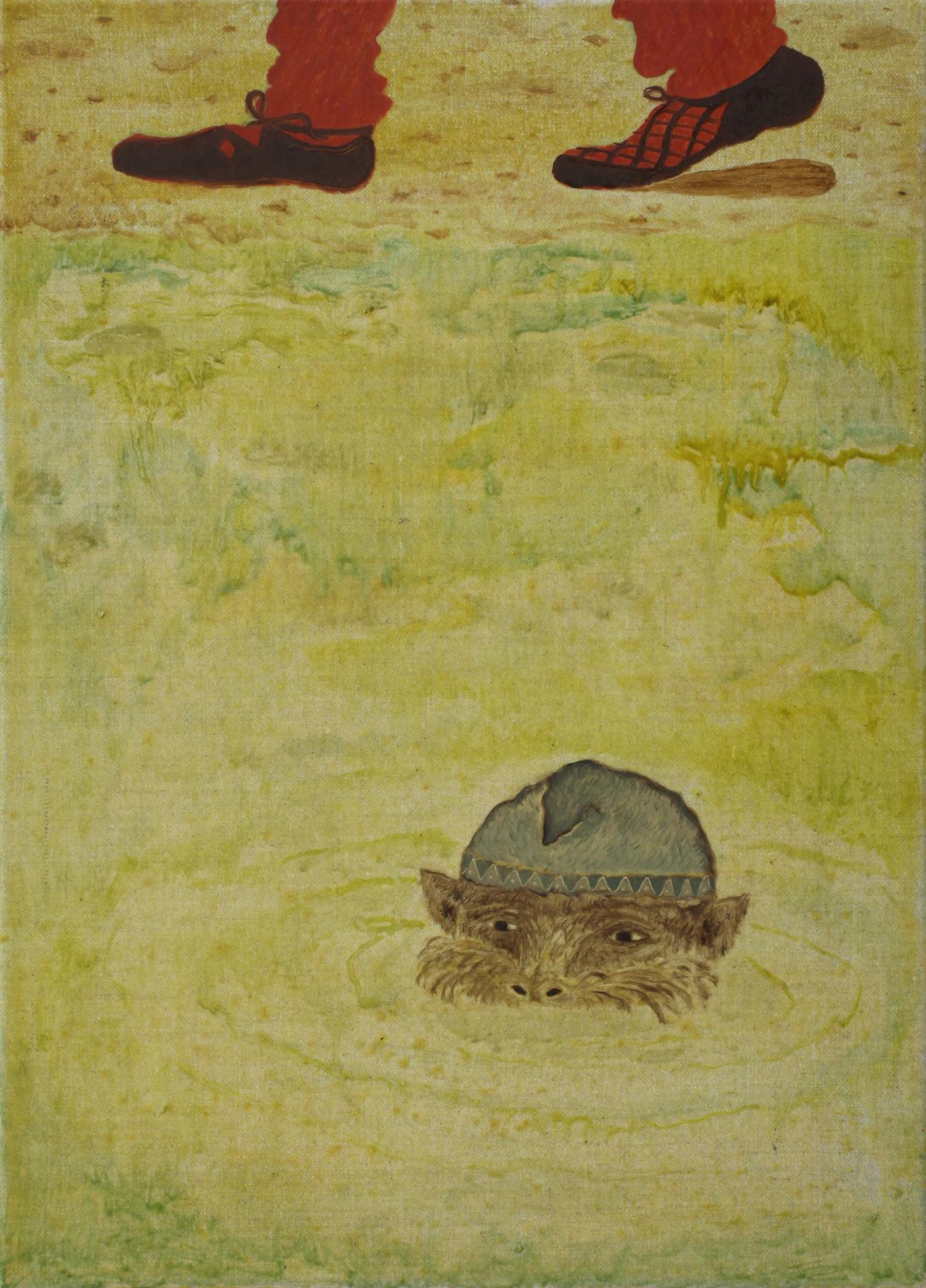
Joseph Dilnot (b. 1997) is a self taught artist who lives and works in East Sussex. In 2019 he received the Newman Young Artist and RosePaul Scholarships to study at The Essential School of Painting, London. He has exhibited in galleries and institutions including Hastings Contemporary, Gylndebourne, East Sussex and Lido Stores, Margate.
Growing up between the English Channel and the South Downs National Park, Dilnot draws inspiration from the natural world. His images often feature a sense of journeying: “Figures walk in and out of the landscape, they are exiles, hermits, adventurers, ghosts.” Small scale, lyrical paintings and works on paper are inspired by personal mythology, historical research and literature. Within his painted scenes, ordinary objects like ladders, candles, abandoned shoes and hats seem to possess magical qualities with the potential to enable a transformative experience. The images offers the anticipation of an event or the quiet absence of an aftermath.

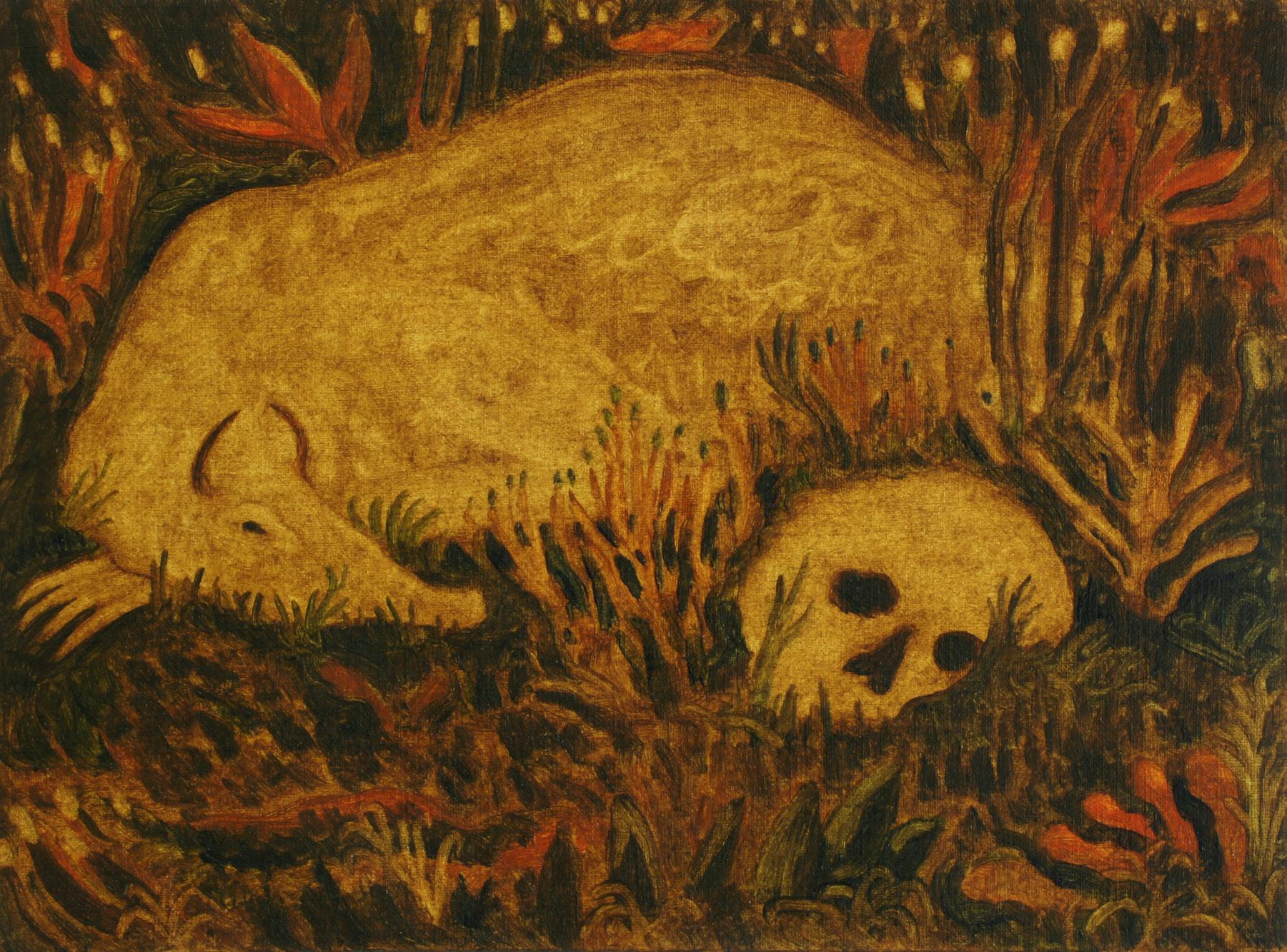
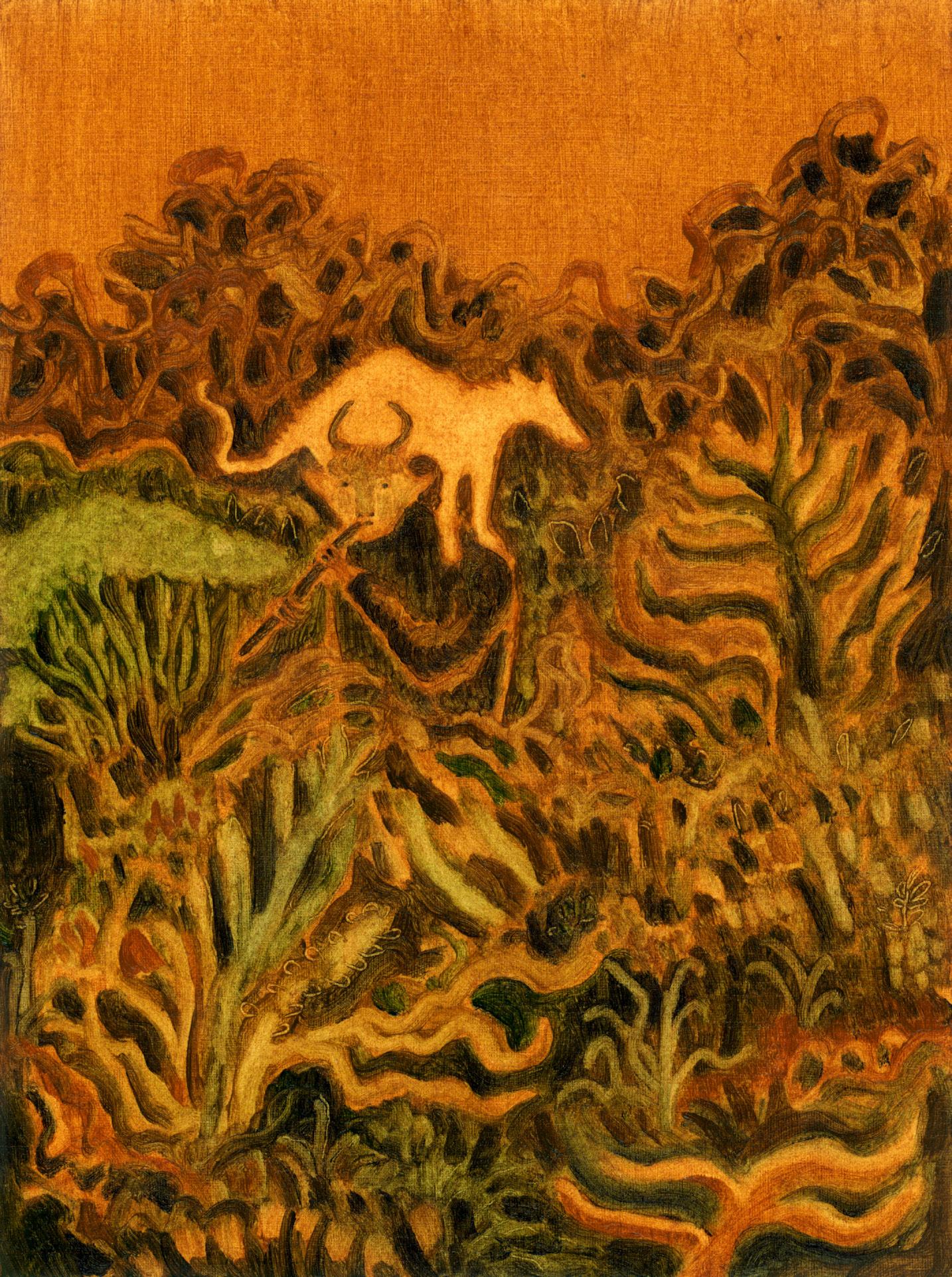


Peter Doig (b. 1959) was born in Scotland and has lived and worked between the UK, Trinidad, Canada, Germany and the US. He currently lives in London. One of the most important painters of his generation on a global scale, Doig came to prominence in the late 1990s. He is known for large scale landscape paintings that originate from photographs, newspapers clippings and movie scenes. “His subject matter is invariably, richly described and wholly specific, yet its mesmeric ambiguity – that persistent air of a puzzle not yet quite solved – endows it with an emotional charge whose potential far exceeds the confines of the canvas.”
In 1993 Doig won first prize at the John Moores Liverpool exhibition and in 1994 he was shortlisted for the Turner Prize. He has had major solo exhibitions at the Foundation Beyeler, Basel (2014); Tate Britain (2008), Dallas Museum of Art (2005), Pinakothek der Moderne, Munich (2004), Bonnefanten Museum, Maastricht (2003) and the Whitechapel Gallery (1998). In 2023 he showed recent work at the Courtauld Gallery, London and the Musée d’Orsay hosted two exhibitions, one curated by Doig from the historic collection, the other a selection of his large scale works. Institutions that hold his work include British Museum, London; National Gallery of Canada, Ottawa; Art Institute of Chicago; Hirshhorn Museum, Washington; Museum of Modern Art, New York an d Tate, London.

Framed dimensions 22 3/4 x 17 1/2 inches

James Fisher (b. 1972) trained at the University of Brighton (1992-95), the Royal College of Art (1995-97) and was awarded a PHD in Fine Art at the University of Gloucestershire in 2009. He has exhibited nationally and internationally since the early 2000’s with solo exhibitions at Aldeburgh Music, Rochester Art Gallery, Eagle Gallery, London and White Conduit Projects, amongst others. His group exhibitions include ‘Fokelore,’ APT Gallery, London (2005); ‘Cities and Eyes,’ Peter Pears Gallery, Aldeburgh (2007); ‘Unfolding the Archive,’ NCAD Gallery, Dublin (2015) and ‘Towards Night,’ Towner Gallery, Eastbourne (2016). His work is held in collections including DLA Piper; Fidelity Investments, London and Jerwood Collection, UK.
Fisher’s work explores an interface between real and imaginary worlds. His paintings combine a sense of observed phenomena with details borrowed from art history, music and literature and are peopled by creatures derived from the altered reality of folklore and computer games. Strange characters that “show a journey from one idea or time or place to another.” He views the painted canvas as a form of palimpsest that can hold multi-layered references whilst retaining the history of the iterations an image undergoes in the process of its formation. Fisher is currently working with composer Tansy Davies on a collaborative project, Linden Lea, which explores ideas about how memory and experience can be embodied within an aural landscape
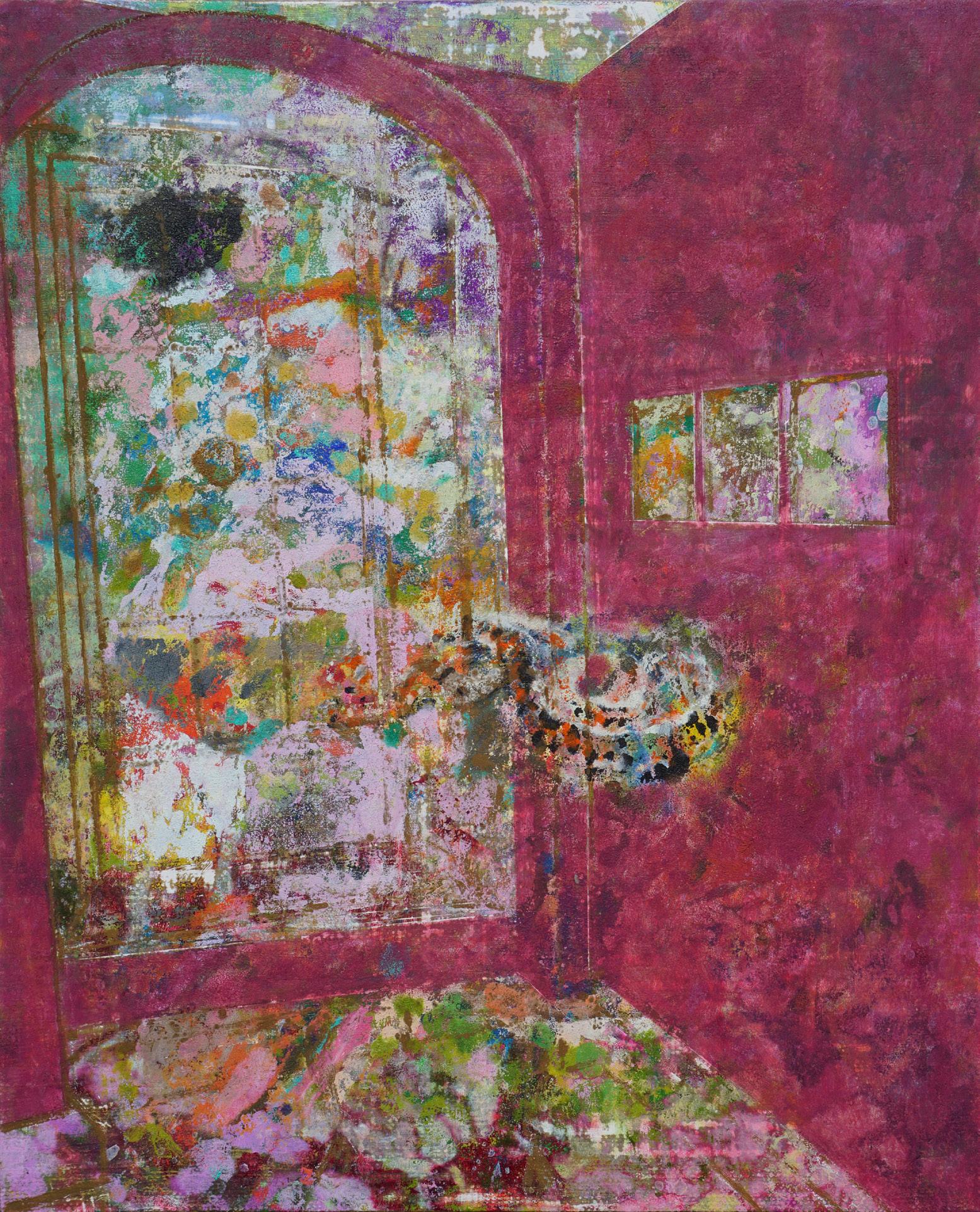

Nick Goss (b. 1981) is an Anglo-Dutch artist who studied at the Slade School of Art and completed an MA at the Royal Academy Schools in 2006.
Goss’ images layer personal and collective history on the canvas through actions of accretion and erasure. The paintings summon the space of dreams, where time, space and identity slip – a sense of ambiguity or strangeness that give the images power and presence. His paintings have an unreliable relationship to time, being connected to memory and a kind of nostalgia, yet existing precisely in their own moment. Built slowly in thin layers of often muted pigment over screen-printed images, at times they slide towards abstraction in form, but never in mood, which almost always remains resolutely tangible.
Goss’ work is held in UK collections including the Victoria & Albert Museum, Zabludowicz Collection and Pallant House. Institutions in the US include The Metropolitan Museum of Art, the Dallas Museum of Art and the Museum of Contemporary Art Cleveland. His recent solo exhibitions include ‘Stations,’ Matthew Brown, Los Angeles (2025) and ‘Smickel Inn, Balcony of Europe,’ Ingleby Gallery, Edinburgh (2023) and he has had regular solo exhibitions at Josh Lilley, London; Simon Preston, New York and Contemporary Fine Arts, Berlin. His first institutional survey ‘Morley’s Mirror,’ took place at Pallant House, Chichester in 2019.

Phil Goss (b. 1984) is the brother of Nick Goss. He studied English Literature at Edinburgh University and Visual Communication at the Royal College of Art, London. He is currently the Director of the Center for Recent Drawing, London and lives and works in Bristol. He has shown in numerous group exhibitions including ‘The Art of British Printmaking,’ Rye Art Gallery; ‘Happy Days,’ Snetha Gallery, Athens; ‘Preparing for What,’ Josh Lilley, London and the Victoria and Albert Museum, London. In 2022 he held a two-man exhibition ‘After Image,’ with James Fis her at The Bindery, London.
There is a deep correlation in Goss’ work between the literary and the visual. His images are often prompted by a line of poetry or a film still and originate from observational drawings that are developed as carved woodblock prints. Multiple different colored impressions enable him to calibrate their emotional charge through shifts in tone or texture. Ultimately he chooses a single printed impression and returns to the wooden matrix, using it as the basis to make a painting in which the echoes of his cut marks remain imbedded.
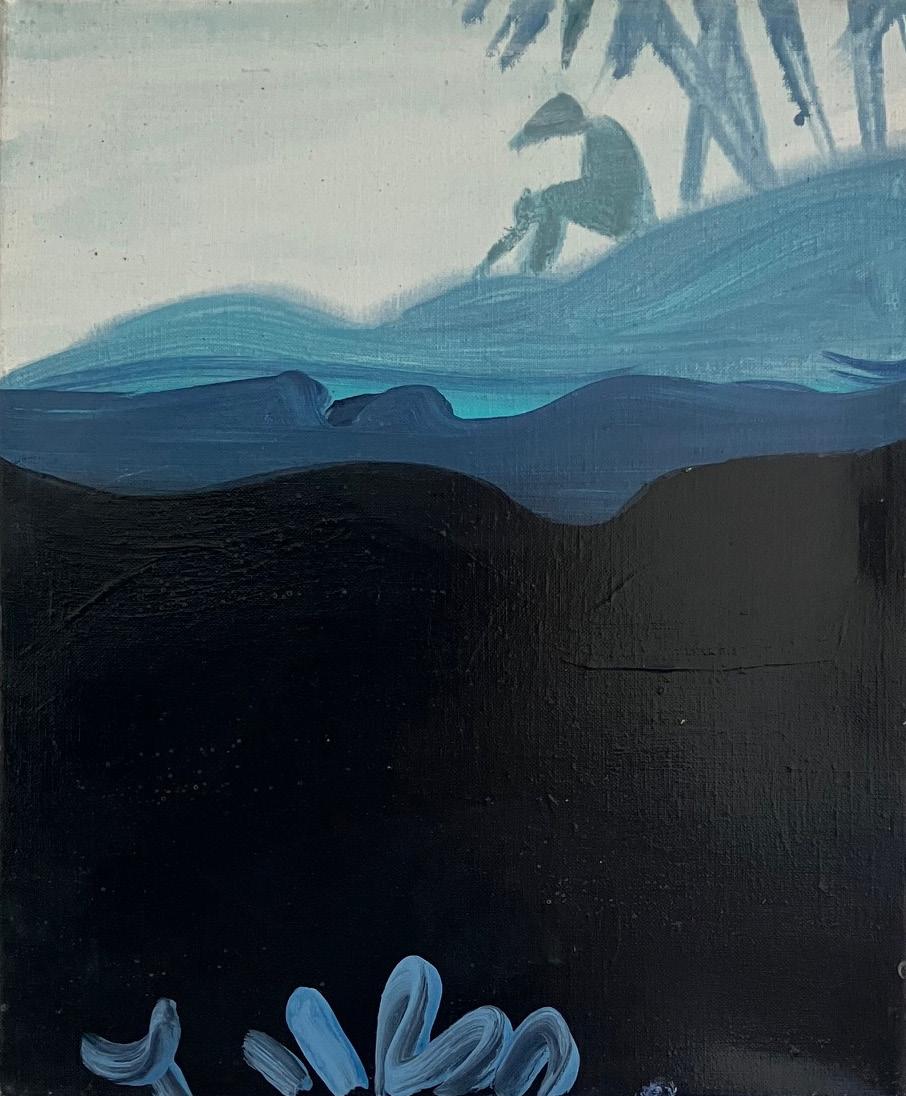
Susie Hamilton (b. 1954) attended St. Martin’s School of Art before studying English Literature at Birkbeck College, where she attained her BA with First Class Honors and was awarded the George Smith Prize. In 1992 she completed a Diploma in Fine Art at the Byam Shaw School of Art. Since the late 1990s she has held regular solo exhibitions with Paul Stolper, London in addition to solo shows at Galeri Trafo, Oslo (2007); Triumph Gallery, Moscow (2008) and Galleri Hugo Opdal, Norway (2009). Her work has been acquired by numerous collections including Government Art Collection, UK; British Museum, Dept of Prints and Drawings and New Hall Ar t Collection, Cambridge.
Hamilton has written of her work: “My style has been called ‘iconoclastic’ since my painting is a process of construction and defacement … My materials are not simply employed as servants of representation, made to depict shoppers, samurai, explorers, surgeons, riders etc., but are used to assail the people depicted with blots, spots, lines or veils. My figures are invaded by pencil marks, obscured by thin layers of oil or dissolved into acrylic fluidity, with the result that they are transformed into hybrids who seem either fragile or predatory. My ‘alchemical’ process of making and unmaking leads to remaking, to the creation of uncertain and enigmatic images hovering between abstraction and figuration and between human and non-human, as if the human is always vulnerable to being transformed.”
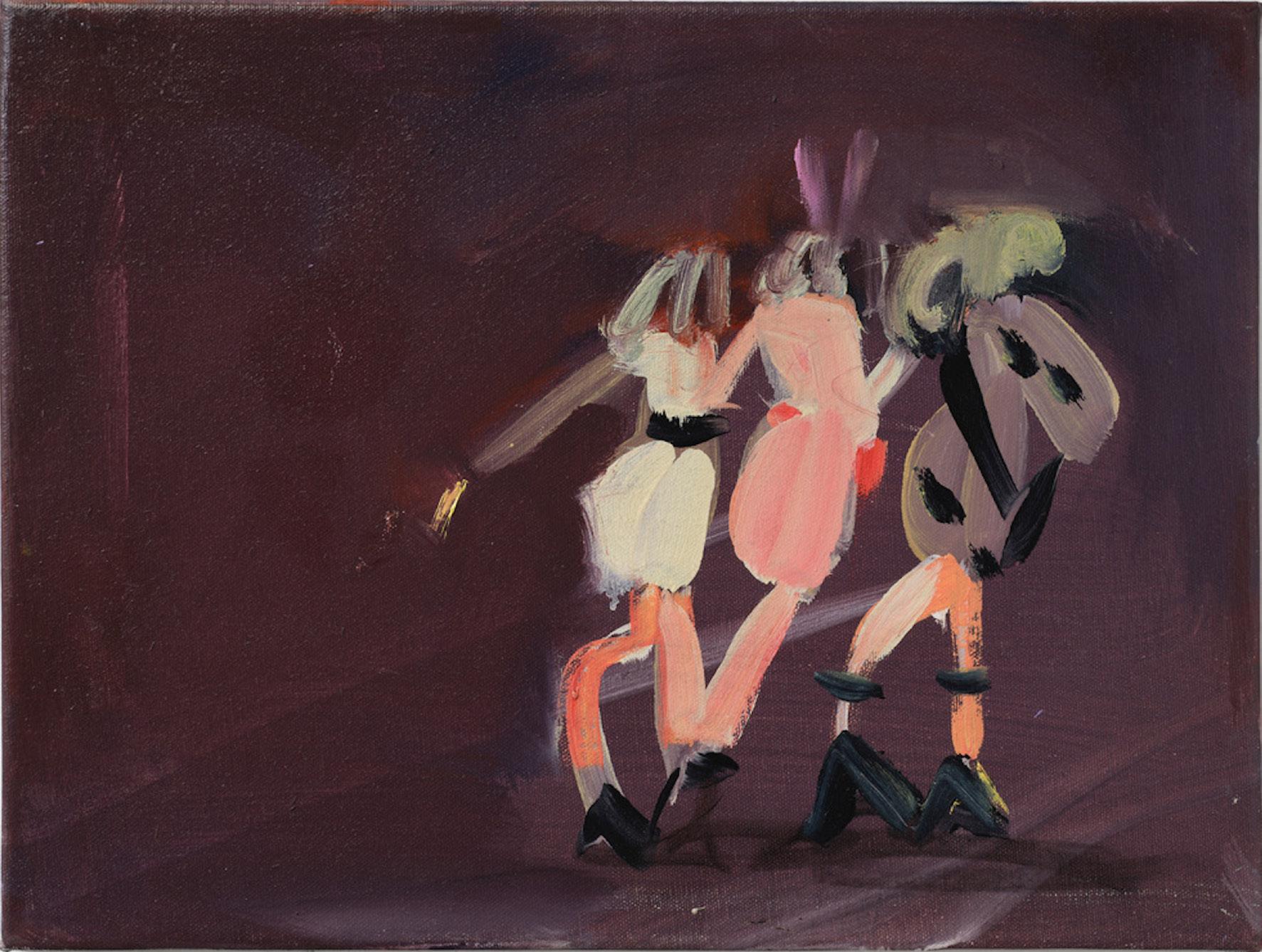


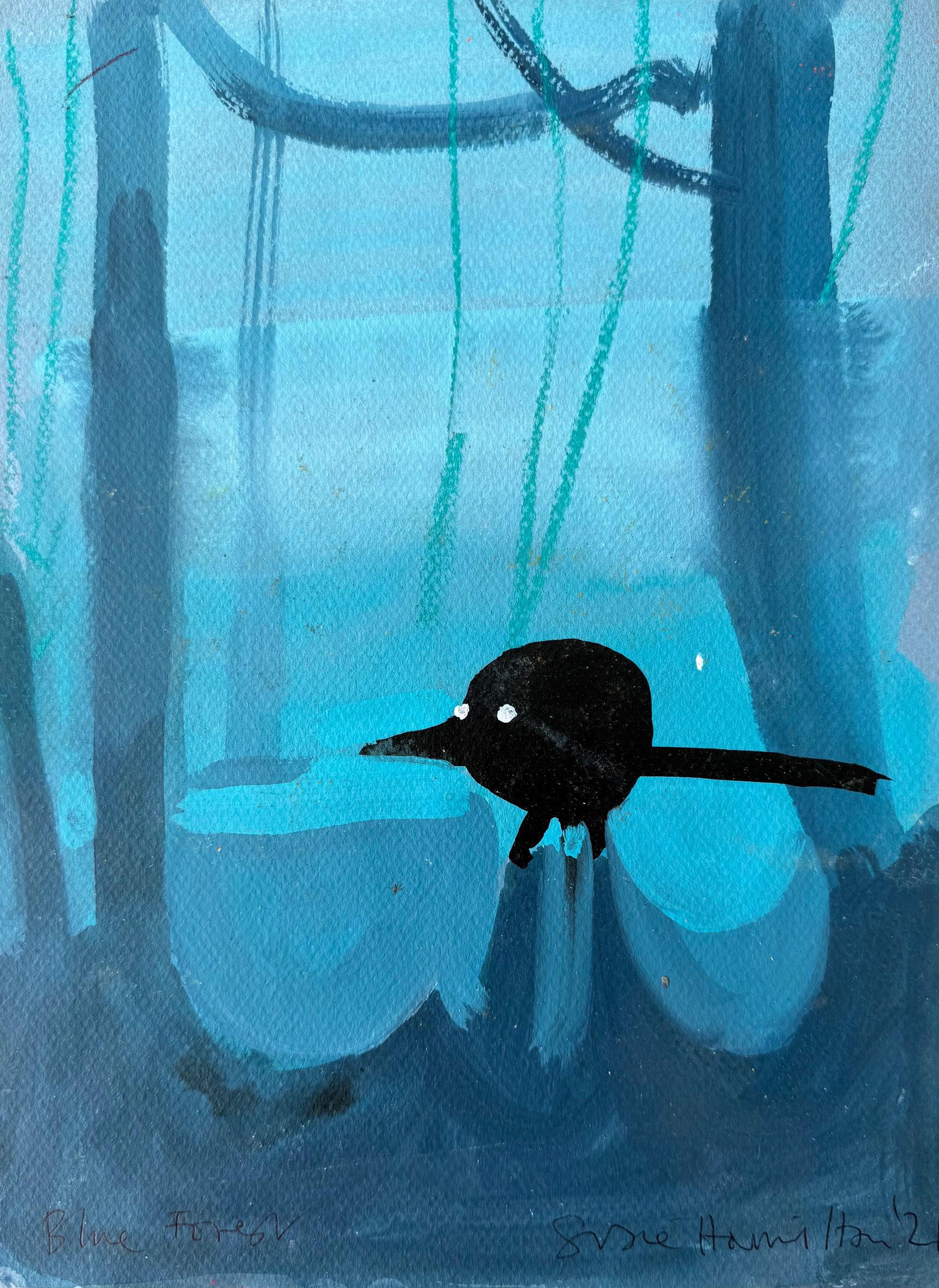

Tom Hammick (b. 1963) studied History of Art at Manchester University before attending Camberwell School of Art. A painter, printmaker and teacher, he has held numerous solo exhibitions over the last thirty years in the UK, Europe, US and Canada. Recent solo shows include ‘My Sister’s Garden,’ Lyndsey Ingram Gallery, London (2022) and ‘Dark Woods of England,’ Gallerie Boisserée, Cologne (2020). He has won a number of awards for his work including the V&A Award at the International Print Biennale, Newcastle (2016) and a Jerwood Drawing Prize (2004). From 2014-15 he was Artist in Residence with the English National Opera. His work is held in institutions worldwide including Arts Council of Ireland, Art Gallery of Nova Scotia, British Museum, Library of Congress, New York Public Library, Pallant House, Victoria & Albert Museum and Yal e Center for British Art.
“There is a quiet poetry in Hammick’s work that stands in opposition to much of the noise and brouhaha of the current art scene. He begins with what is local and known, depicting the land and seascapes around his home … Unafraid of being beautiful or emotional, or of speaking with authentic feeling, these paintings of lonely figures looking out across moonlit fields, or standing isolated, … seem to suggest the transience and fragility of human existence .”.

Marcus Harvey (b.1963) studied at Leeds College of Art and graduated from Goldsmiths College in 1986. A painter, sculptor, publisher and art educator associated with the YBA group of artists who came to prominence in the 1990’s Harvey gained notoriety for his iconic painting Myra which was featured in the exhibition ‘Sensation’ at the Royal Academy of Art, London in 1997.
From his early Readers Wives paintings, to more recent iconic large scale multi-media works that depict the white cliffs of Dover, he has consistently explored aspects of the British psyche, reflected in the iconography of popular culture and cultural history. His work has been shown in numerous international solo exhibitions including ‘The Führer’s Cakes,’ Galleria Marabini, Bologna (2005); ‘White Riot,’ White Cube, London (2009) and ‘Inselaffe,’ Jerwood Gallery, Hastings (2016) and significant group exhibitions include ‘Some Went Mad, Some Ran Away’ Serpentine Gallery, London (1994); ‘Young British Artists III’ Saatchi Gallery, London (1995) and ‘Sex and the British,’ Thaddeus Ropac Gallery, Salzburg & Paris (2000).
Harvey’s work is held in collections including British Council, UK; De Woody Collection, New York; Goss Michael Foundation, Dallas; MOMA, Denver; MOMA, New York; Saatchi Collection and Stedalijk Museum, Amsterdam. In 2005 he co-founded Turps Banana magazine and in 2012 he was one of the founders of Turps Art School.

Zurich,Switzerland,8thJuly2024
Celia Hempton (b. 1981) studied at Glasgow School of Art (2000-2003) and the Royal College of Art, London where she attained an MA in Painting in 2007. Her practice spans painting, performance, and installation, contending with the ethics of looking, the consumption of images, and the bodily gaze, within the digital sphere in particular. An ongoing series of paintings Surveillance are initiated from images taken from live security cameras around the world. Hempton’s work both challenges and acknowledges the tropes of history painting, through the prism of digital mediation and from the immediacy of in-person encounters with sites characterised by a sense of disturbance, unpredictability, or instability.
Hempton’s solo exhibitions include ‘Ocean Terminal,’ Flatland Projects, Bexhill-on-Sea (2025); ‘Transplant,’ Phillida Reid, London (2024); ‘Art Night,’ ICA London (2016); Gwangju Biennale (2014); ‘Vug,’ Neuer Aachener Kunstverein, Aachen, Germany (2013) and the performance ‘Tor’ at Fiorucci Art Trust, Stromboli and Serpentine Galleries, London (2016). Selected group exhibitions include ‘Finding Our Blue Sky,’ Lisson Gallery, London (2025); ‘The Living End: Painting and Other Technologies, 1970 - 2020,’ Museum of Contemporary Art Chicago (2024 - 2025); ‘British Art Show 9,’ Aberdeen Art Gallery and The Box, Plymouth (2021 - 2022); ‘My Life in the Metaverse,’ Abu Dhabi Art, Manarat Saadiyat, UAE (2022); ‘Art in the Age of the Internet, 1989 to Today,’ ICA Boston (2018) and ‘Electronic Superhighway (2016 - 1966),’ Whitechapel Gallery, London (2016). Her work is held in collections including The Museo de Arte Moderno de Medellin, Colombia, British Council Collection and the Government Art Collection, UK.

Roger Hilton (1911-1978) was a pioneer of abstract art in post Second World War Britain. He studied at the Slade School of Fine Art in London from 1929 to 1931. Eager to refine his artistic approach, he moved to Paris in the 1930s and studied at the Académie Ranson where he was mentored by Roger Bissière, a key figure in the Nouvelle École de Paris. Influenced by European avant-garde movements including Tachism and Cobra, as well as artists such as Paul Klee and Joan Miró, he was a prominent member of the St. Ives School of Painting and associated with artists including Patrick Heron and Terry Frost. During his lifetime he had solo exhibitions at the Institute for Contemporary Arts, London (1958) and Serpentine Gallery, London (1974). He won the 1963 John Moores Painting Prize and he exhibited at the British Pavilion at the Venice Biennale in 1964, winning the UNESCO Prize. He was appointed CBE in 1968 and the Hayward Gallery, London mounted a major retrospective of his work in 1993.
As Hilton’s work evolved towards abstraction, it was characterized by bold colors, simplified forms, and gestural brushwork. In 1961 he wrote of his approach: “Abstraction in itself is nothing. It is only a step towards a new figuration, one that is truer... For an abstract painter, there are only two possible outcomes: either he abandons painting for architecture, or he reinvents figuration.” His later works are filled with images of stasis and spiritual voyaging. Memory, observation and the simple joy of making marks constitute a complex variety of impulses behind them, as he retrieved a childlike freshness of vision, marked by a lifetime’s experience.
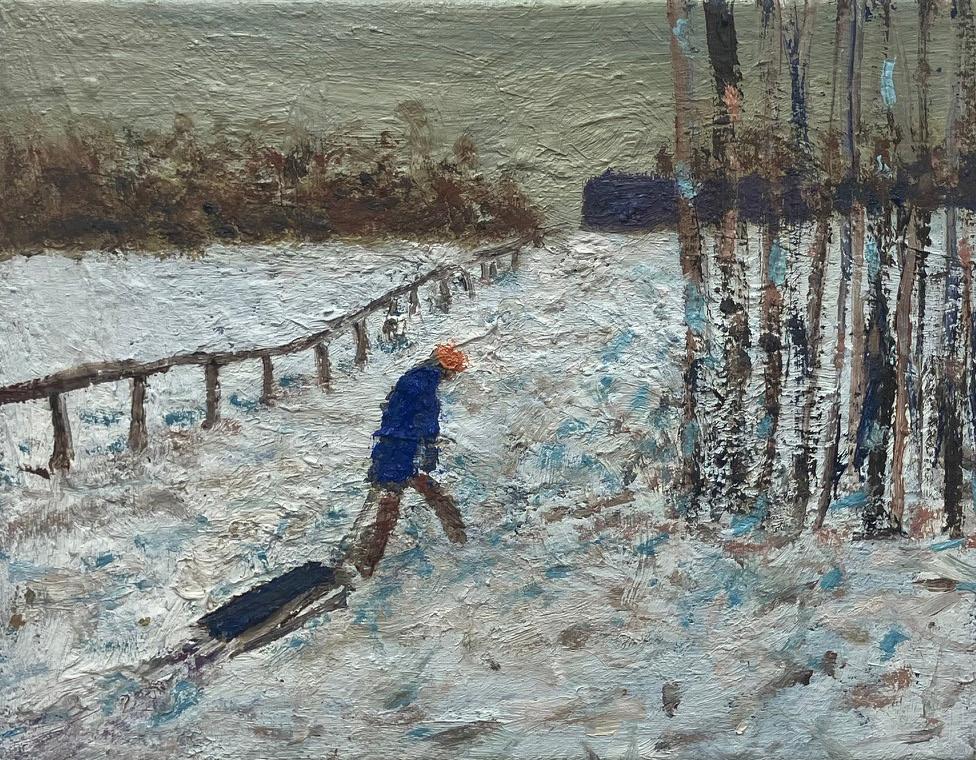
Paul Housley (b. 1964) graduated with a BA in Fine Art at Sheffield City Polytechnic in 1986, and attained an MA in Painting from the Royal College of Art in 1995. Deeply involved in the material and formalities of oil paint, Housley’s work “refracts his world and the phenomena that catch his eye. Reaped from the flow of our modernity, the social lives, histories, and restive objet de désir, pictured in his paintings recall those kaleidoscopic moments captured by the poetic M.G. Baudelaire’s modernist legend.”
He has shown in numerous international exhibitions including ‘The Poets Elbow,’ Belmacz, London (2020); ‘Slow Painting,’ Hayward Gallery Touring, curated by Martin Herbert, Leeds Art Gallery, Leeds (2019); ‘The Player Becomes the Game,’ Monte Clark Gallery, Vancouver (2019); ‘Dice. Apple. Knife’ with Joel Tomlin, Sothebys, Stockholm (2018); ‘Snooker Room,’ new jörg, Vienna (2017); Between Things, University of Chichester, Chichester, ‘God & Sausages’ (curated by Maria Georgoula), Stoa Zerbini, Athens (2017); ‘Awkward,’ Anna Zorina Gallery, New York (2017); ‘Factory to Palace,’ Sid Motion Gallery, London (2016); ‘Mini Bar,’ Farbvision, Berlin (2016); ‘Journeys to the Interior,’ Belmacz, London (2015); ‘Concrete/Oblique,’ David Risley Gallery, Copenhagen (2014); ‘Studio Stories,’ Galleria Bianca, Palermo (2014).

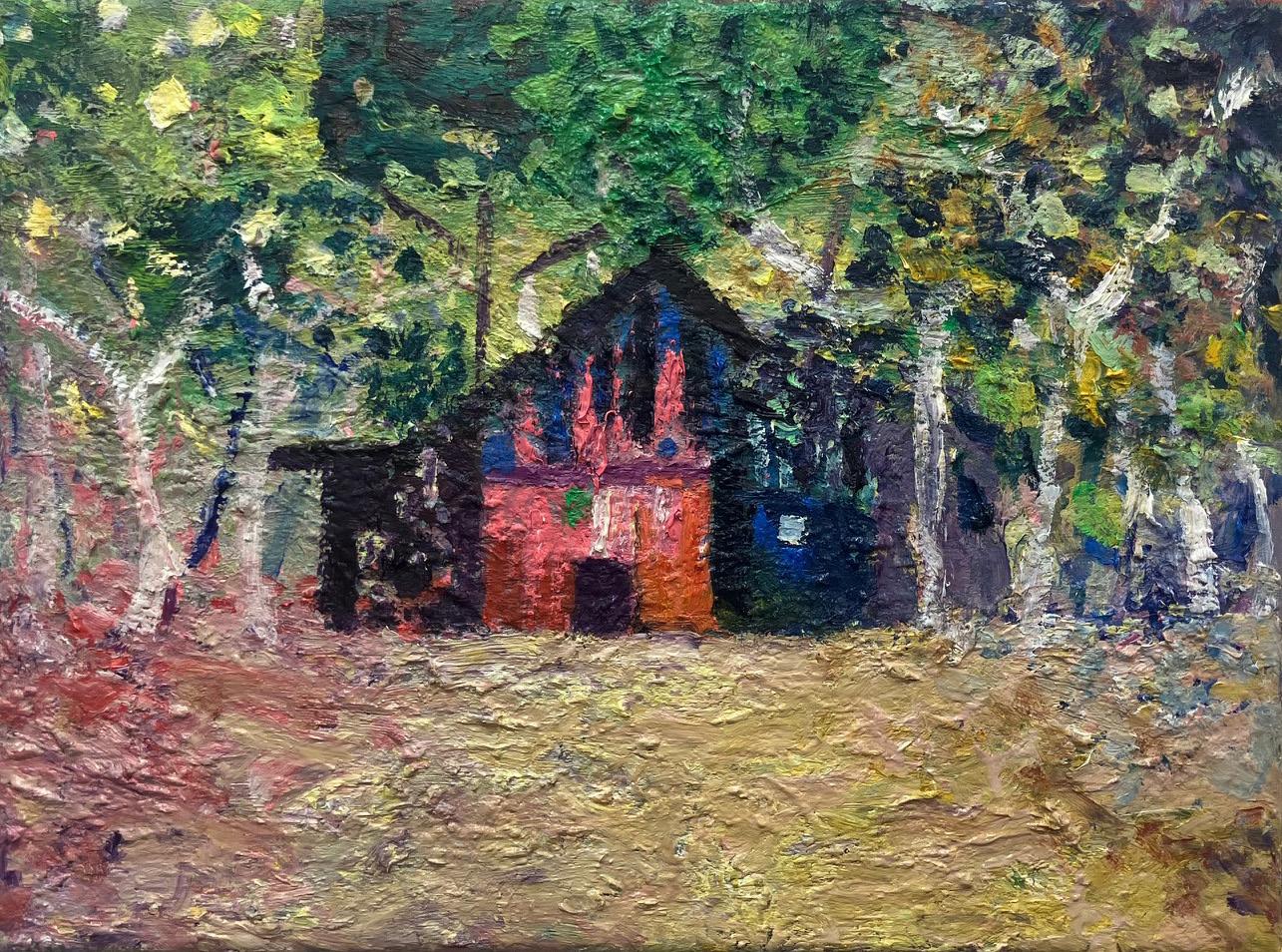

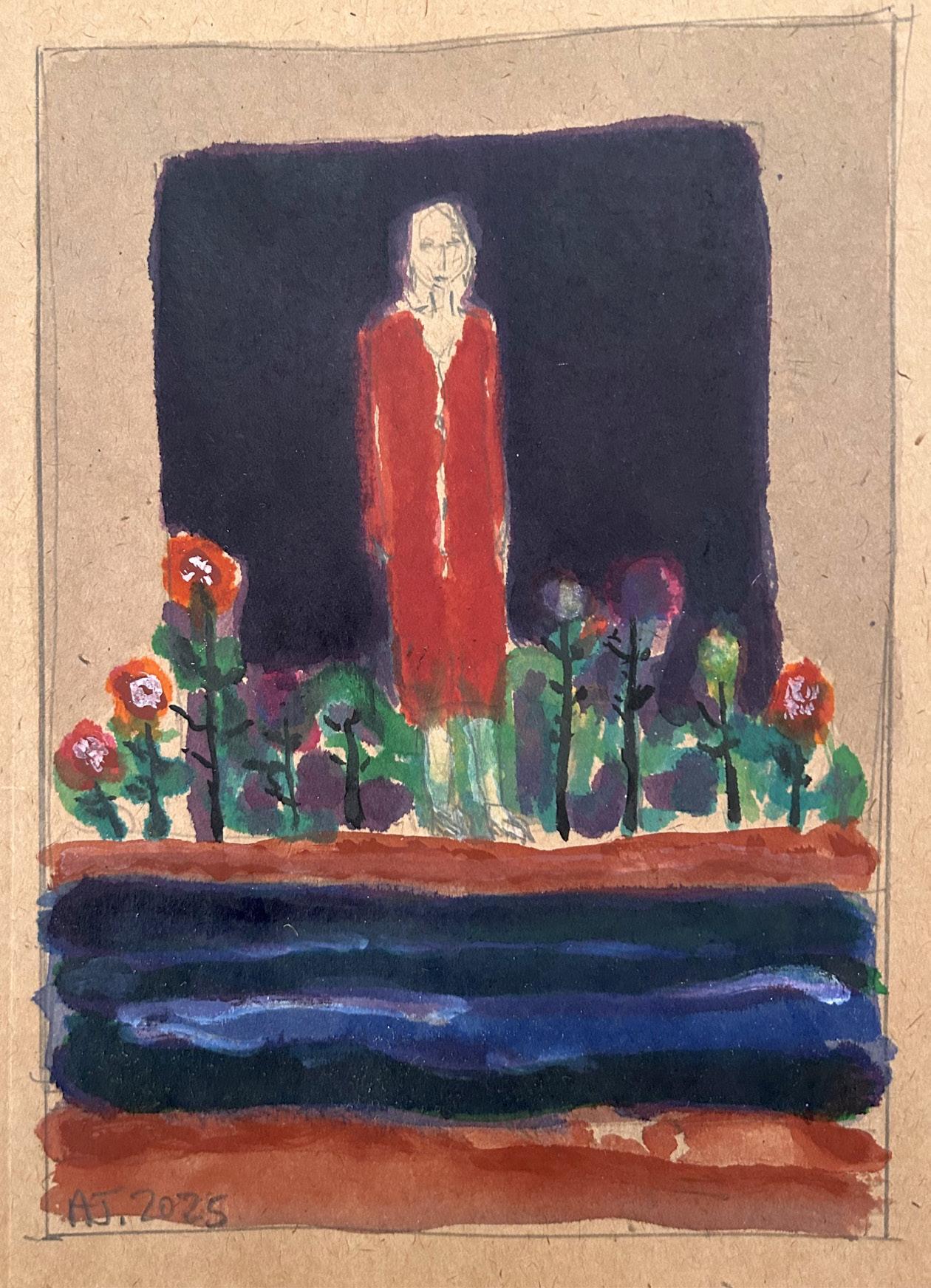
Andrzej Jackowski (b. 1947) trained at Falmouth School of Art and the Royal College of Art, London (1974-77). Born in north Wales to Polish parents his early years were spent in a refugee camp in the north of England. The experience had a profound effect on his work which is steeped in autobiographical memories, including recollections of a family history in Poland and a feeling of alienation. Using powerful, insistent images from his past he explores ideas of human memory and psyche, on both a personal and collective level. Meditative and often melancholy his recent paintings center on the possibility of kinship and are suffused with a te nder radiance.
Jackowski was Professor of Painting at the University of Brighton for many years. His work is represented in many public art collections including Arts Council England; Bibliotheque Nationale, Paris; British Council; British Museum, London; Fogg Art Museum, University of Harvard, USA; National Museum of Wales, Cardiff and Walker Art Gallery, Liverpool. His solo exhibitions include ‘Seeing Voices,’ Purdy Hicks Gallery, London (2025); Aberystwyth Arts Center (2013) and ‘Remembered Present,’ Abbott Hall, Cumbria (2009). HIs work has been featured in many significant group exhibitions including ‘Drawing the Unspeakable,’ Towner, Eastbourne (2024); ‘Art on Paper since the 1960s: the Hamish Parker Collection,’ Dept of Prints and Drawings, British Museum, London (2022), ‘Towards Night,’ Towner, Eastbourne (2016) and ‘Dreams of Here,’ Brighton Museum and Art Gallery (2012).



Merlin James (b. 1960) studied at the Central School of Art and the Royal College of Art, London. He currently lives and works in Glasgow, Scotland. His work has been widely exhibited, including recent solo presentations at Maureen Paley & Studio M, London (2024); Kunstsaele, Berlin (2023); Anton Kern Gallery, New York (2022); Philadelphia Art Alliance, Philadelphia (2022); Kerlin Gallery, Dublin (2021); and A-M-G5, Glasgow, Scotland (2018). His work is held in the collections of global institutions including the British Council, UK; Brooklyn Museum, NY; Musee d’Art Moderne de la Ville, Paris; National Museum of Wales, Cardiff; OCT Boxes Art Museum, Shunde, China; the San Francisco Museum of Modern Art; Tate Britain, London; and Sifang Art Museum, Nanjing, China, among others.
James approaches the history and legacy of painting with a highly considered and unconventional viewpoint. As commented by Artforum’s Sherman Sam, his work “has sought to rigorously problematise the experience of painting while simultaneously deepening its formal language”. Generally small in scale, his paintings depict diverse subject matter including vernacular architecture, riverside views, post-industrial landscapes, empty interiors, mysterious figures and scenes of sexual intimacy. His quietly textured oeuvre is informed by a deep understanding of the painted medium, its material history, and deployment across a range of formal and representational sub-genres. Working neither directly from life nor from photographs, he draws on impressions and memories over time to reimagine familiar spaces and presences.
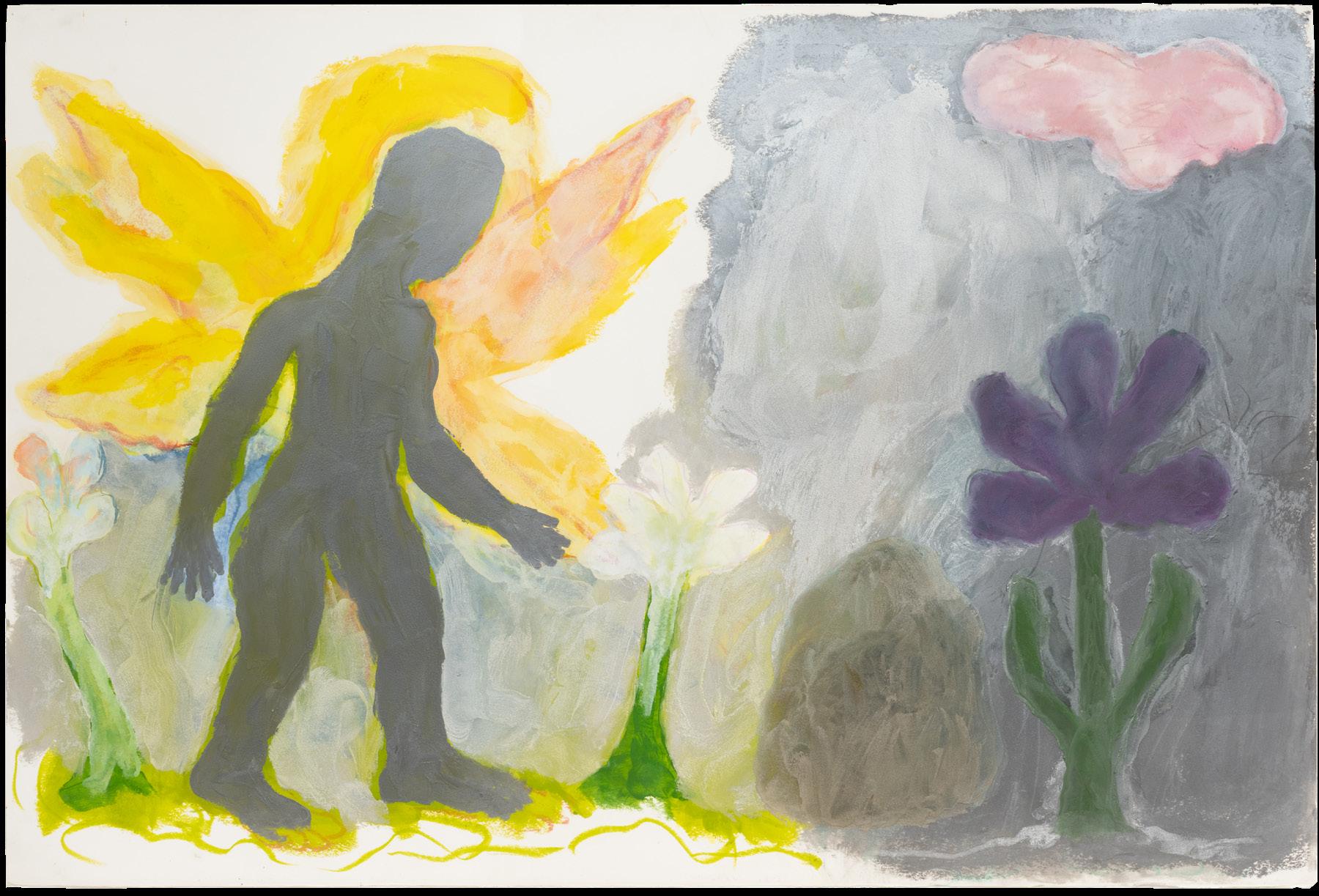
Ken Kiff (1935-2001) was one of the most singular artists who practised in Britain at the end of the 20th century. Trained at Hornsey School of Art (1955-61) he initially taught in schools before becoming a Tutor in Painting at Chelsea School of Art and the Royal College of Art, London where over thirty years he influenced generations of artists. He was elected a Royal Academician in 1991 and from 1991-1993 he worked as Associate Artist in Residence at the National Gallery. His work was exhibited internationally and is included in major public collections including Tate Britain; British Museum, Metropolitan Museum of Art, New York; and MOMA, New York. Recent solo exhibitions include: ‘The National Gallery Project,’ Hales Gallery, London (2025); ‘Ken Kiff: Man, Bird and Tree,’ Carl Freedman Gallery, Margate (2022) and ‘Ken Kiff: The Sequence,’ Sainsbury Center for Visual Arts, Norwich (2018).
Kiff viewed painting as a form of affirmative visual poetics, aligned in its workings to music, upholding “Braques’s thought that the canvas comes alive as a musical instrument does when it is played”. His images were always led by color and encompassed a personal iconography of figuration (that was often misread as confessional) with abstract, and at times, symbolic elements. Dualities, the split self, the tumult of consciousness, were abiding themes, expressed in recurrent motifs – of journeys, encounters, caves, anthropomorphic landscapes – and held in arrangements that borrowed from Cubist traditions. His approach was challenging to a then dominant, critical hegemony that viewed painting primarily through the prism of theoretical standpoints. Today however, many aspects of his work are finding increasing currency with a younger generation of contemporary artists.
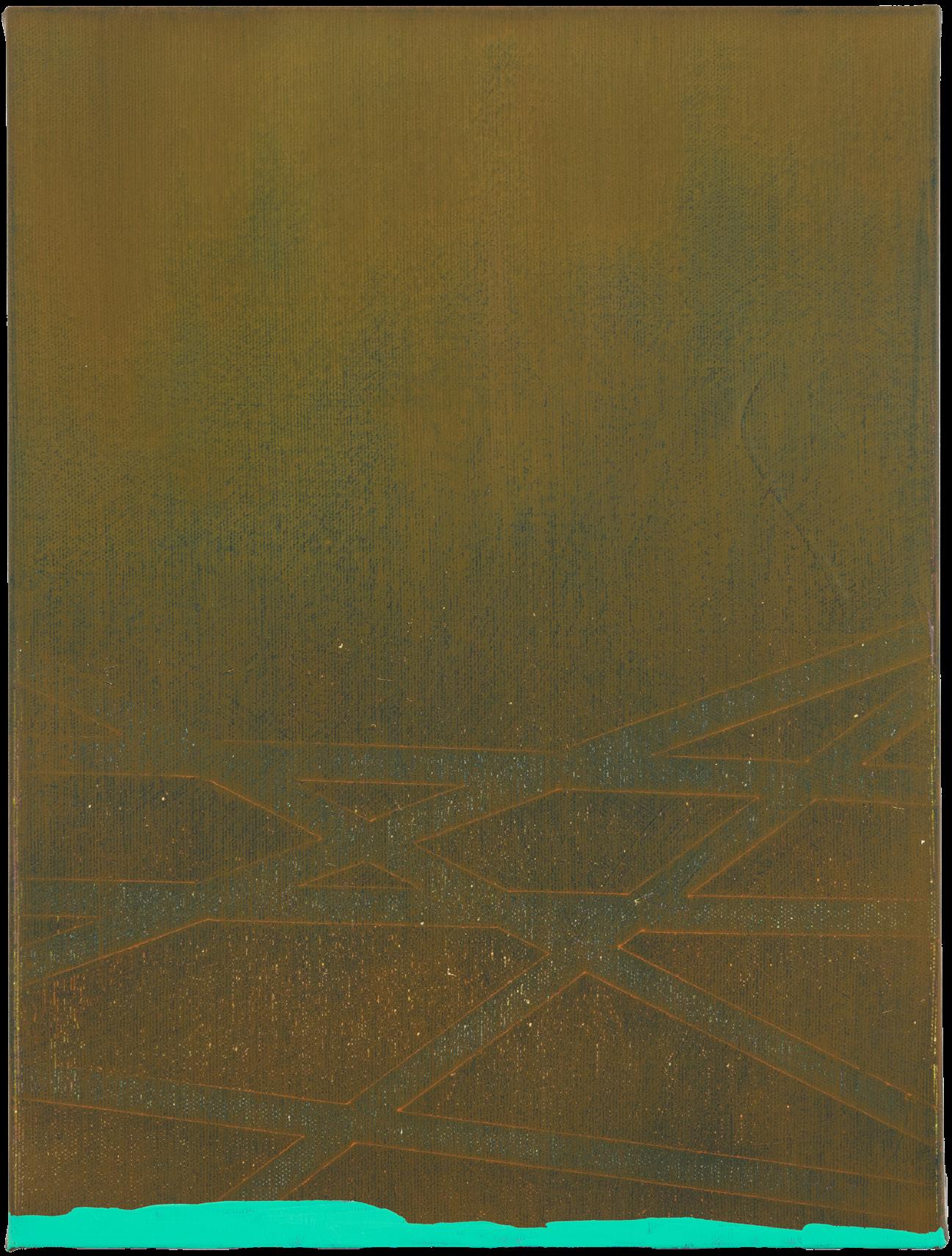
Deborah Lerner (b.1989) lives and works in London. She graduated from Camberwell College of Art in 2023 and participated in the inaugural year of the Apollo Painting School in Manchester, UK and Latina, Italy, in 2024. Her work has featured in recent exhibitions including ‘Apollo Painting School 2024,’ Alice Amati, London (2025); ‘Small is Beautiful,’ Flowers, London, (2024); ‘In Residence in Transit,’ Museo Cambellotti, Latina, IT (2024); Drawing Biennial, Drawing Room, London (2024) and ‘Essential Structures,’ Gerald Moore Gallery, London (2024).
Inspired by the work of Prunella Clough, over the past two years Lerner has been visiting the 67 collections through-out the UK that hold her works. This on-going research led to the recent twoperson exhibition ‘Thank you for Dinner’ that Lerner curated at the Flexitron Gallery, London which featured her paintings alongside Clough’s in addition to photographs taken of the painter’s studio after her death. Lerner says of her own work, “With key concerns such as surface, color, mark-making and light always present the paint is pushed back and forth in an on-going negotiation. Ultimately, the works defer to the process to arrive at their final conclusions; they are beyond logical thinking, something accessible only through the act of doing.”

Deborah Lerner, InteriorObjections , 2025, Acrylic and pen on paper, Framed dimensions 11 x 13 3/4 inches
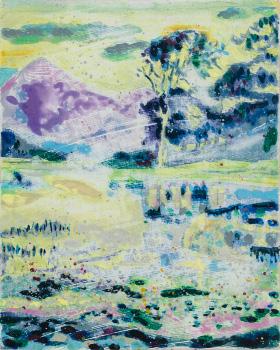
John Maclean (b. 1972) studied at Edinburgh College of Art (1990-94) and the Royal College of Art, London where he attained an MA in Painting in 1996. He lives an d works in London.
With a focus on landscape and contemplative outdoor scenes, Maclean sources his imagery from salvaged, hand-tinted postcards or print-outs from the internet. Although small, these paintings evoke ideas of a larger narrative, where we, the viewer, only experience a single vignette from a much broader storyline. With its story-telling qualities, it is difficult not to compare his approach to painting with his other creative pursuit in writing and directi ng films.
Though gaining an education in visual arts, Maclean took a hiatus from painting to follow his musical career as a founding member of the influential group The Beta Band (1996-2005). He then pursued film directing and only returning to painting during the pandemic, subsequently being offered his first solo show which took place at White Columns in New York in March 2022. His work has featured in group exhibitions including ‘Happy Hunting Ground’ curated by Andrew Cranston (1998) and ‘The Poster Show,’ Cabinet Gallery, London (2000). He has presented four solo exhibitions with The Approach, London.


Elizabeth Magill (b. 1959) was born in Canada and grew up in Northern Ireland. She studied at Belfast College of Art (1979-82) and the Slade School of Art (1982-84) where she attained an MA in Painting.
Described by critic Isobel Harbison as “epic, enigmatic and evocative”, Magill’s paintings present subjective and psychological takes on the landscape genre. Rich with kaleidoscopic patterning and fragmented forms, these vistas are embedded in place – usually rural settings on the edges of settlements – but transported through the artist’s imagination, memories, photographs or moods to be presented as something other: lush, visionary recollections of hills, lakes, hedges and skies glowing with ambient light. Her revisioning of the tradition of the romantic sublime has resulted in a series of hauntingly distressed paintings of the landscape. The complex and densely layered works are produced using various techniques, at times incorporating stencilling, screenprinting and collage, as well as the pouring, blending, dripping, splashing and scraping away of paint. Film and photography are also central to her research, shaping the way the artist looks at landscape, and influencing her approach to conveying light, tone and atmospher e.
Magill’s work is held in collections including Arts Council England, Arts Council of Northern Ireland, British Council, UK; British Museum; Contemporary Arts Society, UK; Crawford Museum, Cork; Government Art Collection, UK; Dublin City Art Gallery; The Hugh Lane, Dublin; Irish Museum of Modern Art; National Gallery of Australia; Neuberger Berman Collection, USA; Southampton City Art Gallery; Tate, London.

Kathryn Maple (b. 1989) studied Printmaking at Brighton University and completed The Drawing Year at The Royal Drawing School in 2013. She was awarded 1st prize at the 2020 John Moores Painting Prize and the Sunday Times Watercolor Competition (2014 and 2016). She has exhibited widely in the UK and abroad, with recent solo exhibitions including ‘Beneath the Swamp Cypress’, Frieze, 9 Cork Street, London (2025); ’Encounters,’ Bo Lee and Workman, Bruton (2024); ‘Kathryn Maple A Year of Drawings,’ Lyndsey Ingram Gallery, London (2023) and ‘Under a Hot Sun,’ Walker Art Gallery, Liverpool (2023). Her garoup exhibitions include: ‘We Are Making A New World,’ Foreign Affairs Projects, Athens, Greece; ‘Drawing The Unspeakable,’ Towner Eastbourne, Eastbourne, and ‘Across The Pond: Contemporary Painting in London,’ Eric Firest one Gallery, New York, USA.
Maple’s work stems from a natural desire to explore, taking inspiration from the outside world and personal experiences. Her paintings are vibrant and highly charged, densely layered with different textures, repetitive marks and bursts of color. Collage plays an active role in planning and research for the larger paintings.
Her themes vary from natural forms, trees and landscapes, to figures and buildings. Often drawn from real life or the artist’s imagination, she gives each object, person or setting the same treatment, creating a myriad of painterly marks.
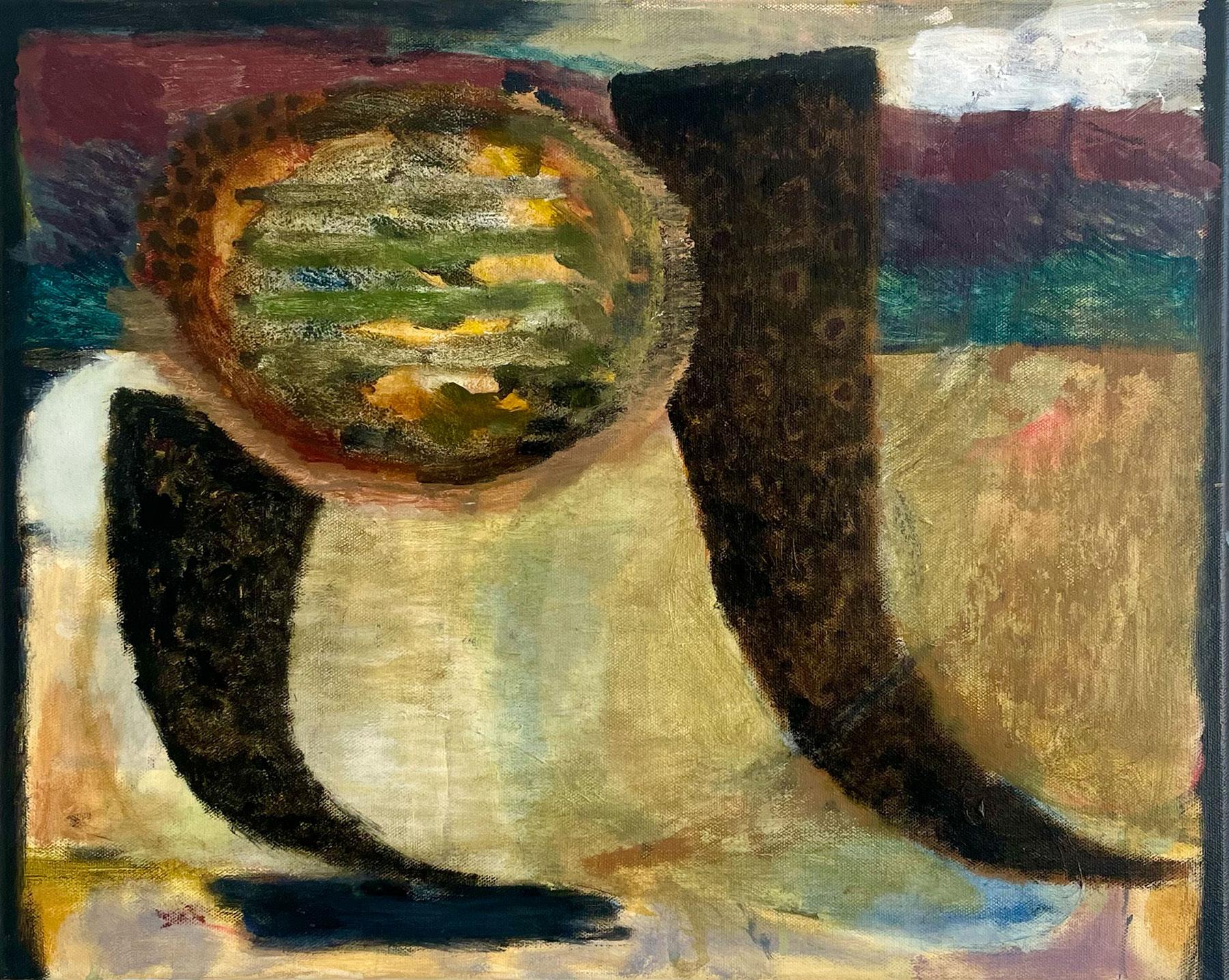
Scott McCracken (b. 1987) received his BA and MFA at Edinburgh College of Art (2005-11) and studied at Turps Art School (2015-17). In 2017 he was awarded the Darbyshire Prize for Emerging Art and in 2019 he was shortlisted for the Contemporary British Painting Prize. His work has been exhibited in solo exhibitions including ‘Guesswork’ Thames-Side Studios Gallery, London (2024); ‘A Light Weight,’ Galeri Hi10, Skien (2022); ‘Sidesplit’ Borough Road Gallery, London (2018) and ‘Big Crunch’ Darbyshire’s Ltd., London (2017). His group shows include OHSH Projects, London; HilbertRaum, Berlin; APT Gallery, London; Kingsgate Project Space, London, Terrace Gallery, London; Bankley Studios & Gallery, Manchester. He is a program leader and mentor at Turps Art School and a regular contributor to Turps Magazine, where he has written on the work of Prunella Clough, Graeme Todd and Phoebe Unwin, amongst others.
McCracken’s paintings knowingly quote details from a lexicon of past paintings yet arrive at singularly original images. “These paintings are built of curtailed attempts. Scott paints with provisionality, not so much as in the provisional painting that surfaced around the 2000s that looks unfinished (even when finished). Instead these are arrangements of unfinished things that are made to interlock, overlap, and finish with each other. What’s left is an aggregated, choreographed assortment of provisional moves, that each give way to the greater good of the whole and become beautifully bound together in small rectangles.” (Mark Jackson on Scott McC racken, Guesswork, 2024).
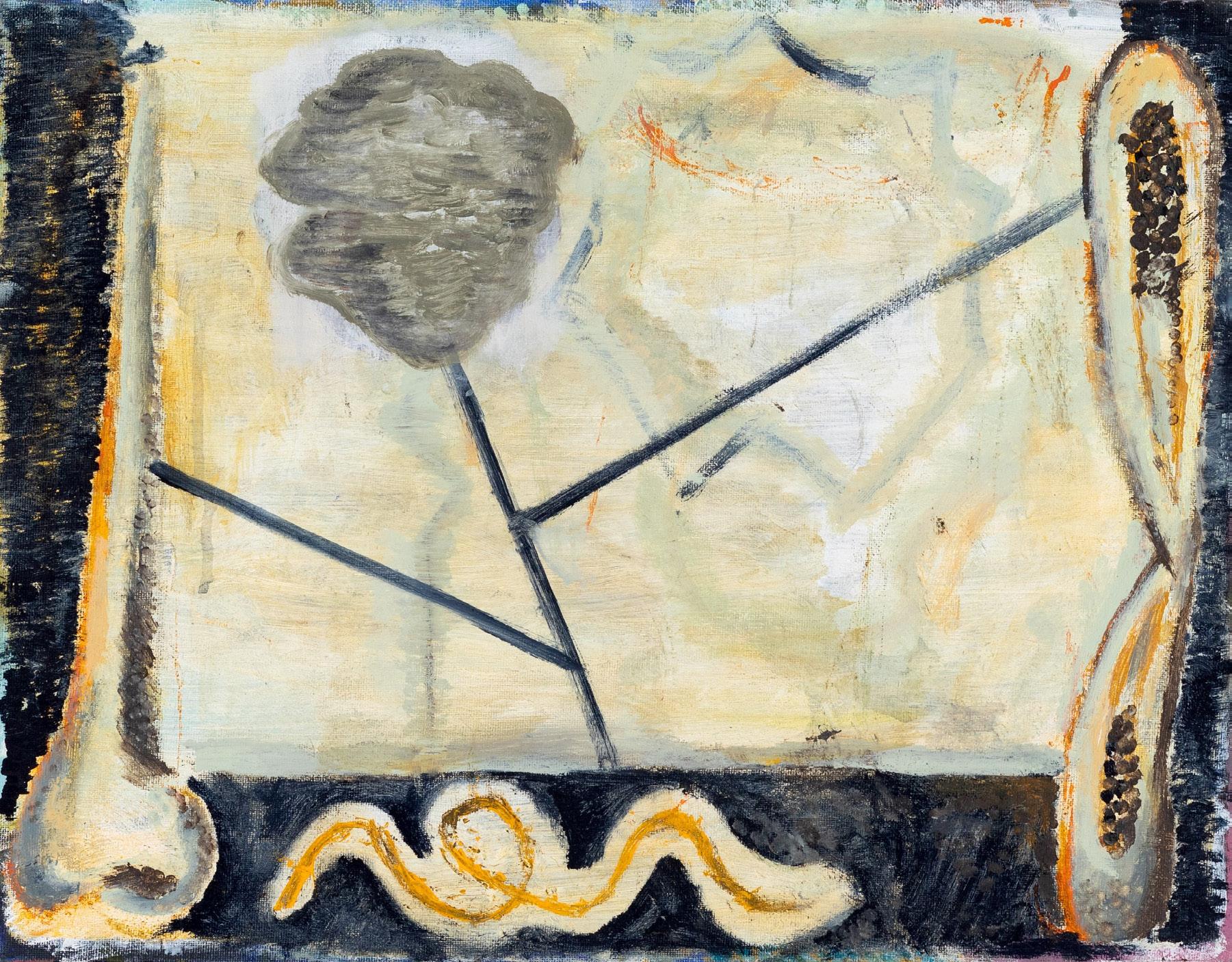
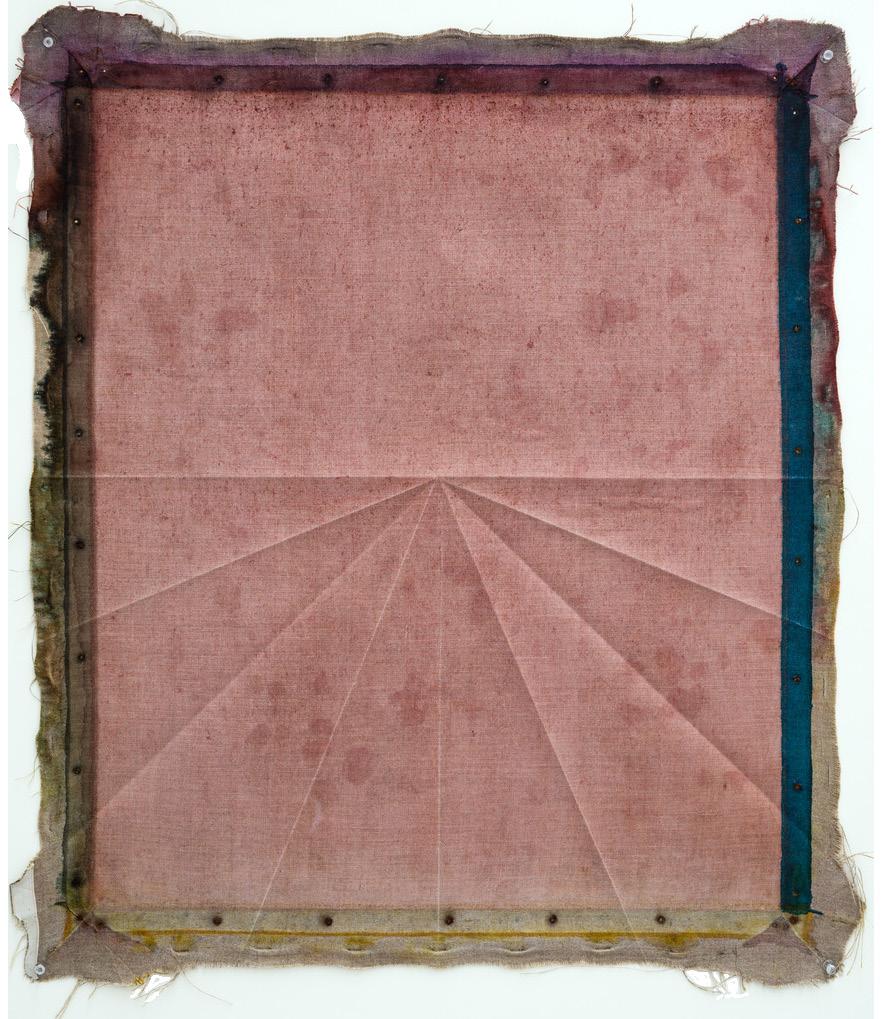
Framed dimensions 32 x 27 3/4 inches
Jeff McMillan (b. 1968) is an American artist born in Lubbock, Texas. He received a BFA from Texas Tech University (1991) and an MFA from the University of Alabama (1995) before moving to London in 1998.
His on-going series of paintings of the last decade result by applying thin veils of oil paint to stretched linen canvases, which are hung on the outside of the artist’s London studio for several years. This gradually changing outdoor installation of dozens of works is reminiscient of a cross between Mondrian’s New York studio wall and the house of a self-taught artist from the Deep South.
The paintings on the exterior encounter sun, rain, and pollution and evolve and discolor over time until McMillan returns them inside the studio to be unstretched to create the finished works.
He has had recent solo exhibitions at Ivorypress, Madrid (2025), and Kristof De Clercq Gallery, Ghent (2024, 2021 and 2018). McMillan was Artist in Residence at Headlands in Sausalito, California (2023) and was the Abbey Painting Fellow at the British School at Rome (2020). Group exhibitions include ‘It Must Be Seen: The Autonomy of Color in Abstract Art,’ Fundación Juan March, Madrid (2025); ‘Color,’ Tristan Hoare Gallery, London (2025); ‘...With Things as Things,’ Luxembourg + Co., London (2024); ‘Art is the Antidote,’ Museum Voorlinden, Netherlands (2022). His work is held in public and private collections including Tate, London; the Whitworth Art Gallery, Manchester; Museum Voorlinden, Netherlands and San Antonio Museum of Art, T exas.
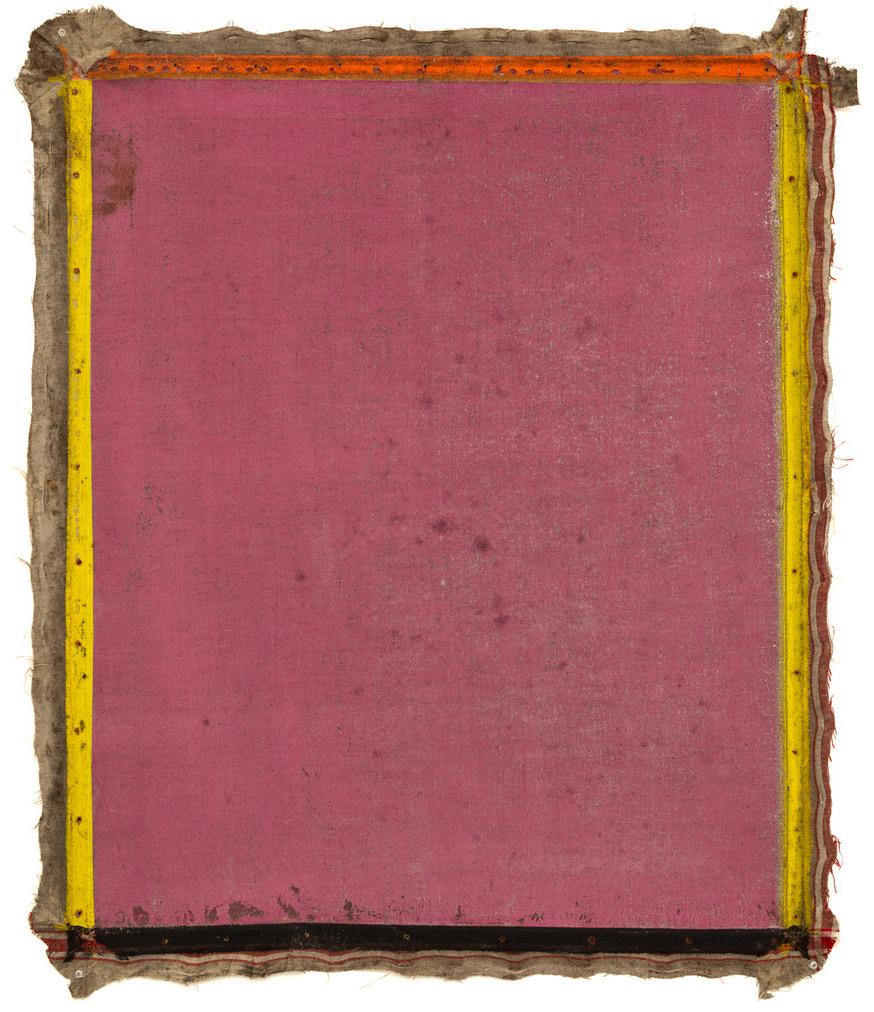
Framed dimensions 39 3/4 x 34 inches

Framed dimensions 21 1/2 x 19 3/4 inches

Margaret Mellis (1914-2009) was born in China and grew up in Scotland, where she trained at Edinburgh College of Art (1930-34). Mellis was one of the early members and last survivors of the group of modernist artists that gathered in St Ives, Cornwall in the 1940s. She and her first husband, Adrian Stokes, played an important role in the rise of St. Ives as a magnet for artists. In Cornwall, Mellis began exploring collage and relief. Created from found materials and paper, these collages were exhibited in New Movements in Art at the London Museum in 1942. After her second marriage to the artist Francis Davison she moved to Suffolk and in the 1960s she embarked upon a series of large abstract paintings known as ‘color structures.’ These were exhibited in London, with solo shows at Grabowski Gallery (1969) and Basil Jacobs Gallery (1972). Works from these exhibitions were acquired by the Arts Council and Government Art Collection
In the mid-1980s, Mellis was included in several high-profile exhibitions, including ‘St. Ives 193964,’ Tate Gallery, London (1985), and ‘Scottish Art since 1900,’ Scottish National Gallery of Modern Art, Edinburgh. In 1987, the Redfern Gallery, London staged a retrospective exhibition, from which the Tate and Arts Council bought driftwood reliefs. The exhibition was also attended by a young Damien Hirst; intrigued by the driftwood constructions in particular, Hirst wrote to the artist, and was invited to visit Mellis in Southwold, forming a lasting friendship. Mellis was part of the Tate St Ives’ inaugural exhibition in 1993, and was the subject of a retrospective that opened at City Art Center, Edinburgh, and toured the UK, in 1997. Recent exhibitions include ‘Modern Scottish Women 1885-1965,’ Scottish National Gallery of Modern Art, and a joint-show with Damien Hirst at Pier Arts Center, Orkney. In 2018, her work featured in an exhibition inspired by Virginia Woolf and her writings, at Tate St Ives.

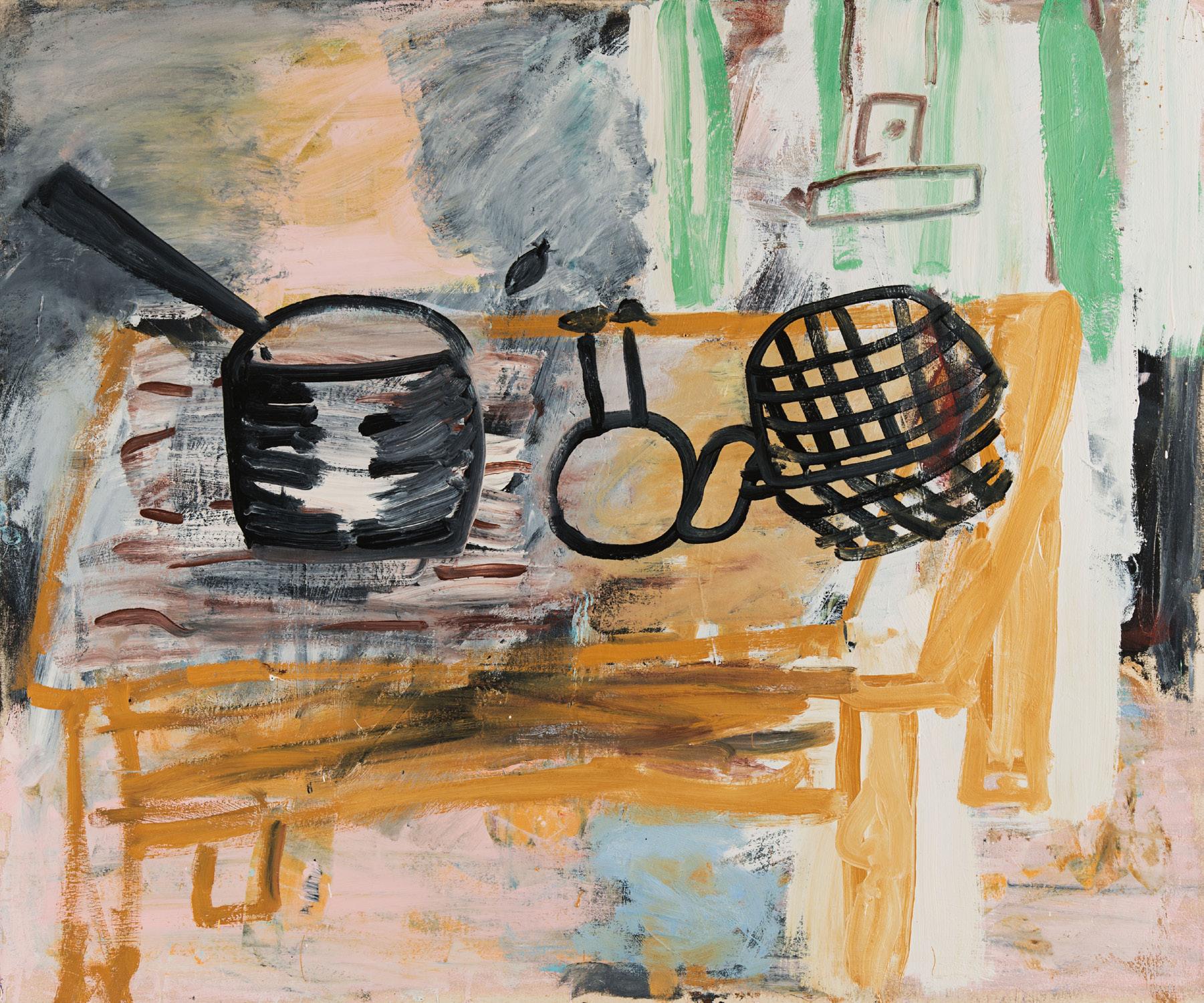
Roy Oxlade (1929-2014) played a critical role in the history of twentieth–century British art. Having initially come to attention in the 1950s, he worked across six decades, producing paintings and works on paper that were rooted by his experiences of the physical world around him. “The artist has to in some way defeat the inevitable,” he commented. “I want authenticity, clarity and a certain peculiarity”. His work is inextricably entwined with his home and studio in Kent, which formed the foundation of his pictures. Articulated by recurrent motifs – scissors, jugs, lemons, lamps – selected for their aesthetic and functional qualities, domesticity and ritual are central to his oeuvre. The artist’s wife, fellow painter Rose Wylie, also appears regularl y in his pictures.
Oxlade trained at Bromley College of Art, Goldsmiths College and the Royal College of Art, London. He taught for many years in art schools and ran a renowned summer school at Sittingbourne, Kent. From the late 1960s he held regular solo exhibitions with London galleries including Air Gallery, Odette Gilbert Gallery, Artspace Gallery and Alison Jacques Gallery. His work is held in collections including Arts Council England; Deal Collection, Dallas; Jerwood Collection, UK; Radtrack Collection, London and South East Arts, UK.
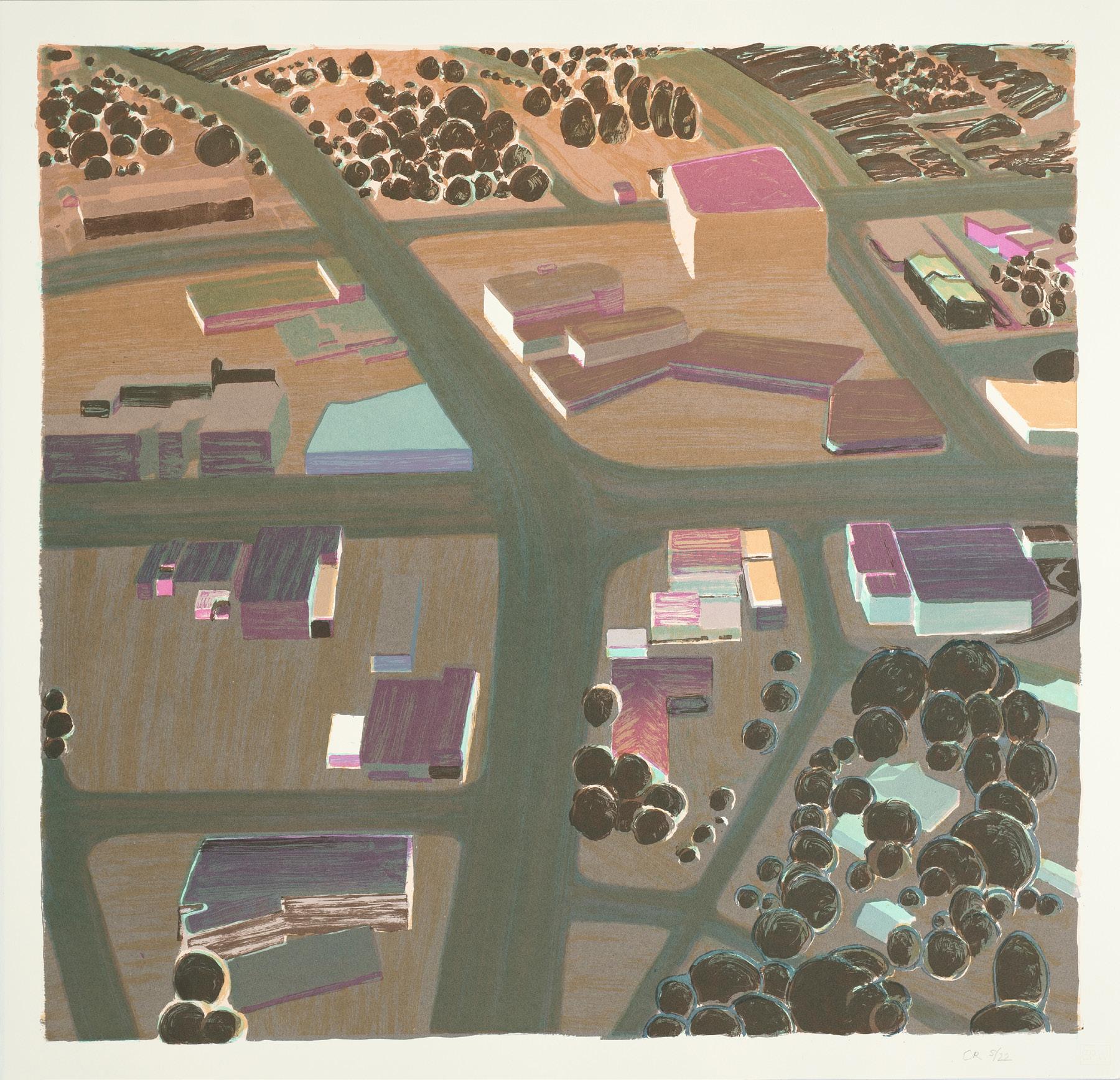
Carol Rhodes (1959-2018) created a distinctive mode of landscape painting across her 25-year career, developing a world of semi-fictional locations that are at once familiar and ambiguous. Intimately scaled, densely rendered and typically taking an aerial viewpoint, her works depict uninhabited industrial terrains and ‘edgelands’ – factories, canals, motorways, reservoirs – described by the artist as ‘hidden areas.’ Psychologically charged and often muted in color, Rhodes’s paintings reflect on our experiences of place, the ways in which we perceive, make and adapt our environments.
Rhodes studied at the Glasgow School of Art (1977-82) but, following her graduation, became involved in social activism, organising and participating in feminist, pacifist, gay rights and social justice campaigns. She co-founded the Glasgow Free University and, between 1986 and 1988, was part of a burgeoning group of artists associated with Transmission, the artist-led gallery of which she was a committee member. She returned to painting in 1990 and was included in exhibitions such as ‘New Art in Scotland,’ CCA Glasgow (1994). Greater exposure came as a result of her first solo exhibition at Andrew Mummery Gallery, London in 1998, at which point works began to enter public collections including Arts Council England; Museum Bonnefanten, Maastricht, Netherlands; British Council Collection, UK; City Art Center, Edinburgh; Fleming-Wyfold Art Foundation, London; Glasgow Museums, UK; The Hepworth Wakefield, UK and Scottish National Gallery of Modern Art, Edinburgh. In 2007, a retrospective exhibition of Rhodes’s work was presented at the Scottish National Gallery of Modern Art in Edinburgh.

Dan Roach (b.1974) gained a BA Hons in Fine Art at the University of Worcester (2007 – 2009) and an MA in Painting from the University of Gloucester (2011).
Roach’s creates images in which recurrent abstract forms are disrupted by instinctive painterly gestures. He works primarily with oil, graphite, and wax on canvas or board, leaving traces of previous imagery visible on the support. The paintings explore spatial ambiguities, focussing on enigmatic emblems that hover at different points within the pic ture’s surface.
His solo and two person exhibitions include ‘Mudlarks,’ Eagle Gallery Cabinet Room, London and Oceans Apart, Manchester (2021), ’Cloud Chamber,’ Eagle Gallery, London (2018), ‘Foundations of Remembrance,’ Worcester Cathedral (2013) and ‘Recent Paintings,’ Campden Gallery, Chipping Campden (2012). Group exhibitions include ‘Double Vision,’ Lion & Lamb Gallery, London (2012); ‘The Art is Falling Apart,’ Terrace Gallery, London (2012); ‘Plane Space,’ Worcester Cathedral (2012); and ‘Abstract Critical Newcomers Award,’ Kings Place, London (2012). His work has been featured in a number of group shows at the Eagle Gallery, London, including ‘Left Over,’ (2022), ‘Counterpoints,’ (2017) and ‘Wanderer’s Field,’ (2013). Roach was selected for the inaugural Abstract Critical Newcomer Awards in 2012 and the Marmite Painting Prize in 2013. From 2011 to 2013 he was the Artist in Residence at Worcester Cathedral.


dimensions 21 x 20 1/2 inches
Lorna Robertson (b.1967) was born in Ayr on the west coast of Scotland. She studied at Duncan of Jordanstone College of Art in Dundee and currently lives and works in Glasgow. Her densely colored paintings, often made with a combination of oil paint and collage, have a distinctly nostalgic tone; shimmering female forms with swinging skirts from the 1950’s or bonneted bathers from the 1920’s jostle with richly described interiors; and crowded table-tops.
“My paintings,” she says “sit somewhere between abstraction and figuration, a tangled game of hide-and-seek that plays with the visibility and readability of an image. I often paint to find out what to paint, creating harmonies and tensions through placement of shape, specificity of color - the process itself becoming an act of revealing”.
Her recent solo exhibitions include Alison Jacques Gallery, London (2024); The Armory Show, New York / Ingleby Gallery (2023) and ‘thoughts, meals, days,’ Ingleby Gallery, Edinburgh (2022). Her work has featured in group exhibitions including ‘Wings of a Butterfly,’ Ingleby Gallery, Edinburgh (2025); ’Drawing the Unspeakable,’ Towner, Eastbourne (2024); ‘Man Digging,’ Exeter Phoenix, Exeter (2023) and ‘Papertrail,’ Matthew Brown Gallery, Los Ange les (2023).
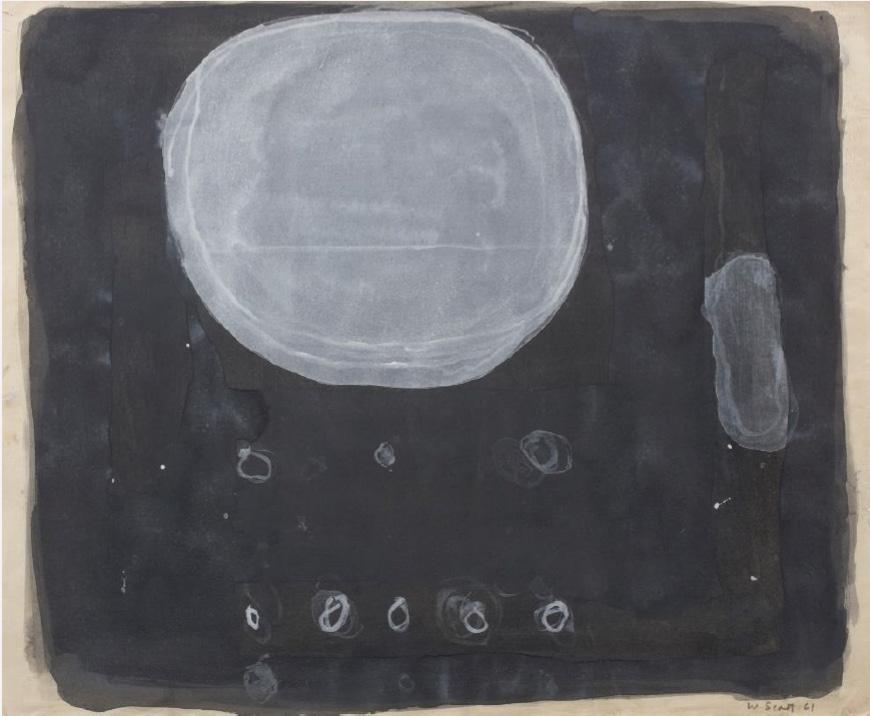
William Scott (1913-1989) was one of the leading British artists of his generation. During his lifetime, his work was exhibited widely, both in the UK and abroad, and continues to be to this day. His paintings can be found in public collections around the world, including Tate, London; the Solomon R. Guggenheim Museum, New York; the Metropolitan Museum of Art, New York; the Musée National d’Art Moderne, Paris and the Art Gallery of New South Wales, Sydney.
Scott was born in Scotland to Irish and Scottish parents, moving to Ulster when he was 11 years old where he spent the remainder of his early life. He studied first at Belfast College of Art (1928-1931) and later at the Royal Academy Schools, London (1931-1935), where he shared accommodation with the poet Dylan Thomas. After completing his studies, he lived in France for several years, mainly in Port Avon and St Tropez, developing a life-long kinship with French still life painting. He spent his adult life living in London and Somerset, with frequent visits to Cornwall where he connected with artists of the St. Ives School. In 1953, he traveled to New York, becoming one of the first British artists to meet the Abstract Expressionists, including Jackson Pollock and Willem de Kooning. In 1958 he represented Britain at the Venice Biennale. His work was shown through-out the 1950s and ‘60s with exhibitions in Tokyo, Paris, Brussels, Copenhagen, Oslo and Rotterdam. He was made a CBE in 1966 and was elected a Royal Academician in 1 984
Scott’s work traversed figuration and abstraction. He said of his painting: “I am an abstract artist in the sense that I abstract. I cannot be called non-figurative while I am still interested in the modern magic of space, primitive sex forms, the sensual and the erotic, disconcerting contours, the things of life.” Drawing inspiration from pre-historic art and the untrained work of children, his work was distinguished by its airy depiction of space, flat planes of color and a lexicon of direct, open markmaking.



Myra Stimson (b. 1961) was born in London and studied at Goldsmiths College of Art (1979-83).
Early acclaim for her text based work led to acquisitions by collections including the Arts Council, British Museum and Goldman Sachs. She held solo exhibitions with Rebecca Hossack Gallery, London (1990, 1996) Whitechapel Arts Gallery, Homerton Hospital, London (1991) and Hales Gallery, London (2001) and participated in group exhibitions including ‘Mommy Dearest,’ Gimpel Fils, London (2000), ‘Don’t Look Down,’ The Nunnery, London (2003) and ‘Drawn 2B Alive,’ Hales Gallery, London (2003). In 2019 her work was featured in the seminal show ‘Pushing Paper,’ a British Museum touring exhibition that was displayed at the British Museum; London, Glynn Vivian, Swansea; Pier Arts Center, Orkney; Cooper Gallery, Barnsley and Durham University, Durham. In the early 2000s she took a break from her art practice in order to teach and bring up her children and has recently resumed exhibiting her work in exhibitions including ‘lush,’ Thames Side Studios Gallery, London (2024) and ‘Touch not touch,’ Vestry Projects, London (2 025).
Stimson’s recent works are interpretations of the natural world. Un-stretched lengths of canvas and cloth combine areas of painted stains and washes with meticulous stitching, integrating opposing techniques within a single language. “Paint to stain and mark the cloth; dripping, pouring, and overlapping washes and marks to create space. Then, I pick up the cloth and needle and start …The stitching is literal, physical, the thread width doesn’t change. This creates an equilibrium within the image, no part more important than any other part. But the pain t tips the balance, adds depth.”
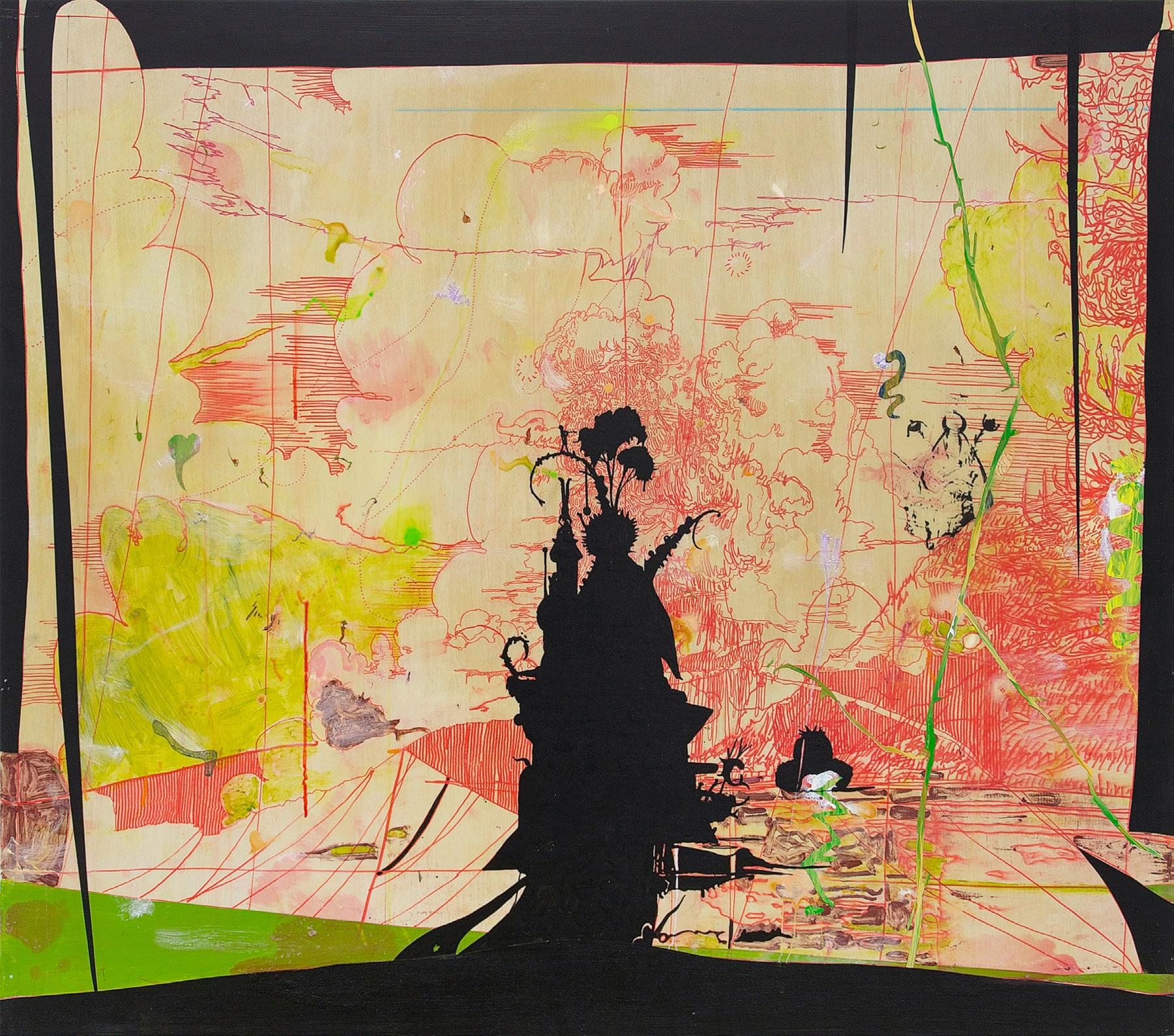
Graeme Todd (1962-2022) was born in Glasgow and studied at Duncan of Jordanstone School of Art, Dundee (1979-1985). From 1991-2020 he was a Lecturer at Ed inburgh College of Art. Todd had an extraordinary ability to absorb elements from different cultures and to turn their impact on him into a visual language that was uniquely his own. Artist’s residencies in Osaka, Japan and the mountainous region of Riehen (on the border of France, Germany and Switzerland), popular music, cartoons, art history, fed into images that presented imagined worlds. Motifs that referred to actual geographies were combined with a personal and surreal calligraphy and executed with an extraordinary range of mark making and material to create sensual, hallucinatory surfaces that explore painting’s illusionistic potential.
A highly respected teacher, Todd exhibited in the UK and Europe in regular solo exhibitions with Mummery and Schnelle, London; Galleria Alessandra Bonomo, Rome and Galerie Brigitte Weiss, Zurich from 1998-2015. His institutional exhibitions included ‘Mount Hiddenabbys’ Fruitmarket Gallery, Edinburgh and Leeds Metropolitan University Gallery (2000); Kunsthaus, Glarus (2002) and Osaka Contemporary Art Center, Japan (2004). His work is he ld in public collections including Arts Council England; City Arts Center, Edinburgh; Fleming-Wyfold Foundation; Kunsthaus, Glarus; Kunsthaus, Zurich; Scottish National Gallery of Modern Art, Edinburgh and Government Art Collection, UK.


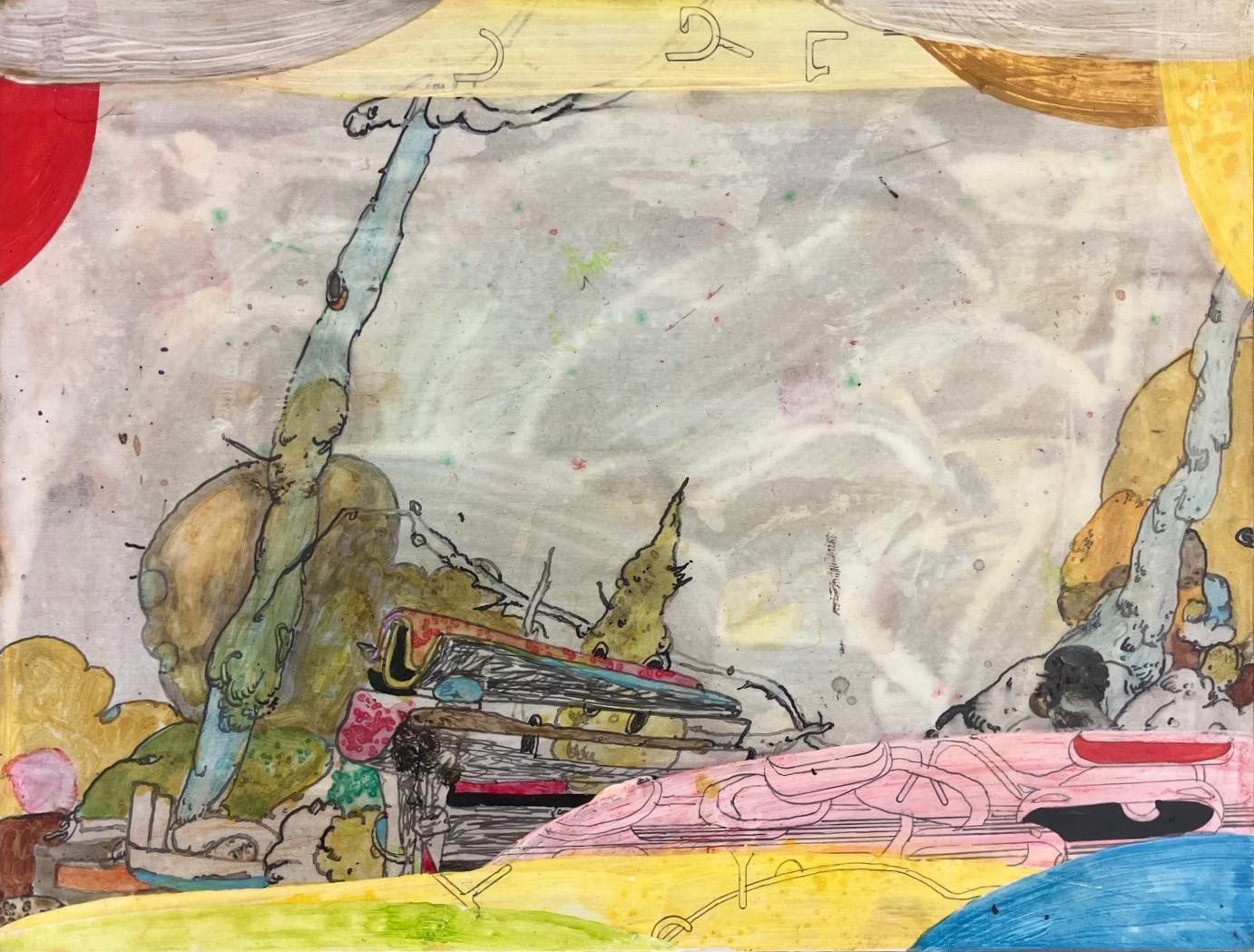

Phoebe Unwin (b. 1979) trained at Newcastle University (1998-2002) and attained an MFA in Painting from the Slade School of Art in 2005.
Unwin’s paintings are rooted in figuration but resist narrative or symbolic interpretation. She treats painting as a site of perception: surface, color, scale, and mark-making do the emotional and conceptual work. Her approach is informed by a reciprocal kind of looking, where nature, people, pattern, design, and architecture shape the painted world, and paintings, in turn, influence how we see. She explores how visual form in paint can communicate experiences or things that are so deeply familiar they are felt before they are named. While her visual language shifts across bodies of work, she consistently draws on subjects with sensory range - subjects which somehow reveal an essence of themselves. Her practice shares affinities with Imagist poetry, minimalist music, Color Field painting, and Intimist interiors: traditions that privilege precision, presence, and mood over message.
Recent group exhibitions include ‘Wings of a Butterfly,’ Ingleby, Edinburgh (2025) and ‘A Room Hung with Thoughts,’ Green Family Foundation, Dallas (2025). Her solo exhibitions include ‘The Pointed Finger,’ Amanda Wilkinson Gallery, London (2023); ‘Iris,’ Towner Gallery, Eastbourne UK (2019) and ‘Field,’ Collezione Maramotti, Reggio Emilia, Italy (2018). Unwin’s work is held in private and public collections including Tate, UK; Arts Council Collection, UK; Southampton City Art Gallery; British Council Collection; Government Art Collection, UK; Yale Center for British Art, New Haven, Connecticut; Space K, Seoul; Collezione Maramotti, Reggio Emilia; Museum Boijmans Van Beuningen, Rotterdam. She is represented by Amanda Wilkinson Gallery, Lond on.
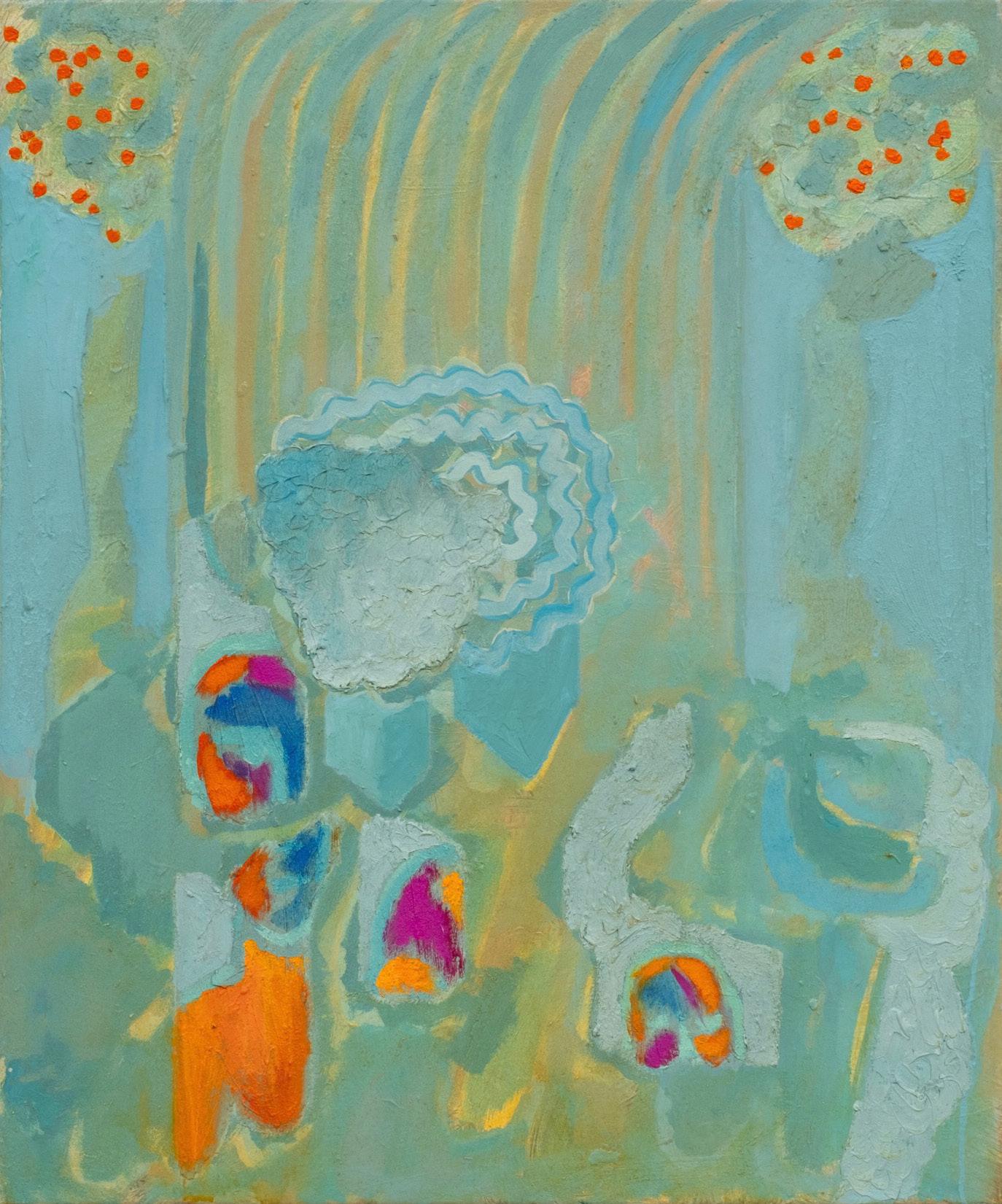
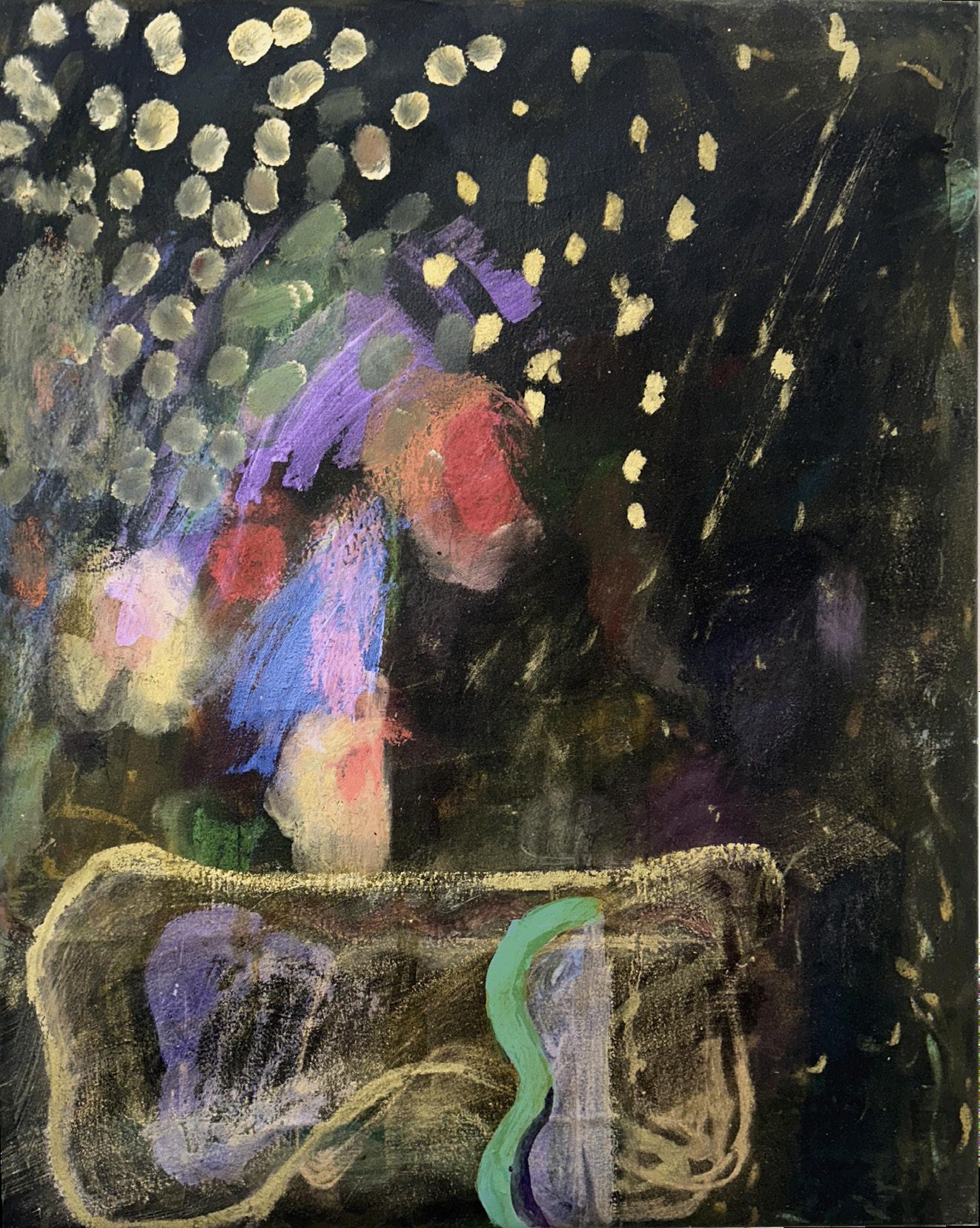

Alice Walter (b. 1992 ) graduated in 2014 with a BA (Hons) in Painting from the University of Brighton. She works predominantly as a painter, investigating the metaphysical and physical properties of paint on supports that she assembles from found wood and canvas. The art critic Paul Carey Kent says of her work:
“Alice Walter builds her endearingly ramshackle paintings from small sections of sawn plywood, frayed odds and ends of previously used canvases and oddments that have fed themselves from the locality into the decidedly functional mess of her St Leonards studio. If that sounds abstract, it is – until the textures and colors suggest some sort of figuration – then she goes with that, adding in some recurring tropes, such as a ‘blockhead’ that might be a self-portrait of sorts – she likes ‘the idea of the cartoon bringing things down to earth in a humorous way.’ Out of all that something of the medieval, the folksy and the surreal coheres in a peculiarly Walterish way, topped off by riddling titles. Where is the sunflower in ‘Demise of Sunflower?’ Ah, of course… Then we go back and forth between the material reality, the ambiguous space and scale, and the compelling presence of her small worlds.”
In 2024 she was an invited artist at the ING Discerning Eye, Mall Galleries, London and she has exhibited in group exhibitions through-out the UK, including ‘Towards Night,’ Towner, Eastbourne; Oriel Davies Open, Wales and Kingsgate Project Space, London – in a two person exhibition with Sherman Sam. In 2013 Walter was Young Artist in Residence at Glyndebourne Opera, East Sussex.
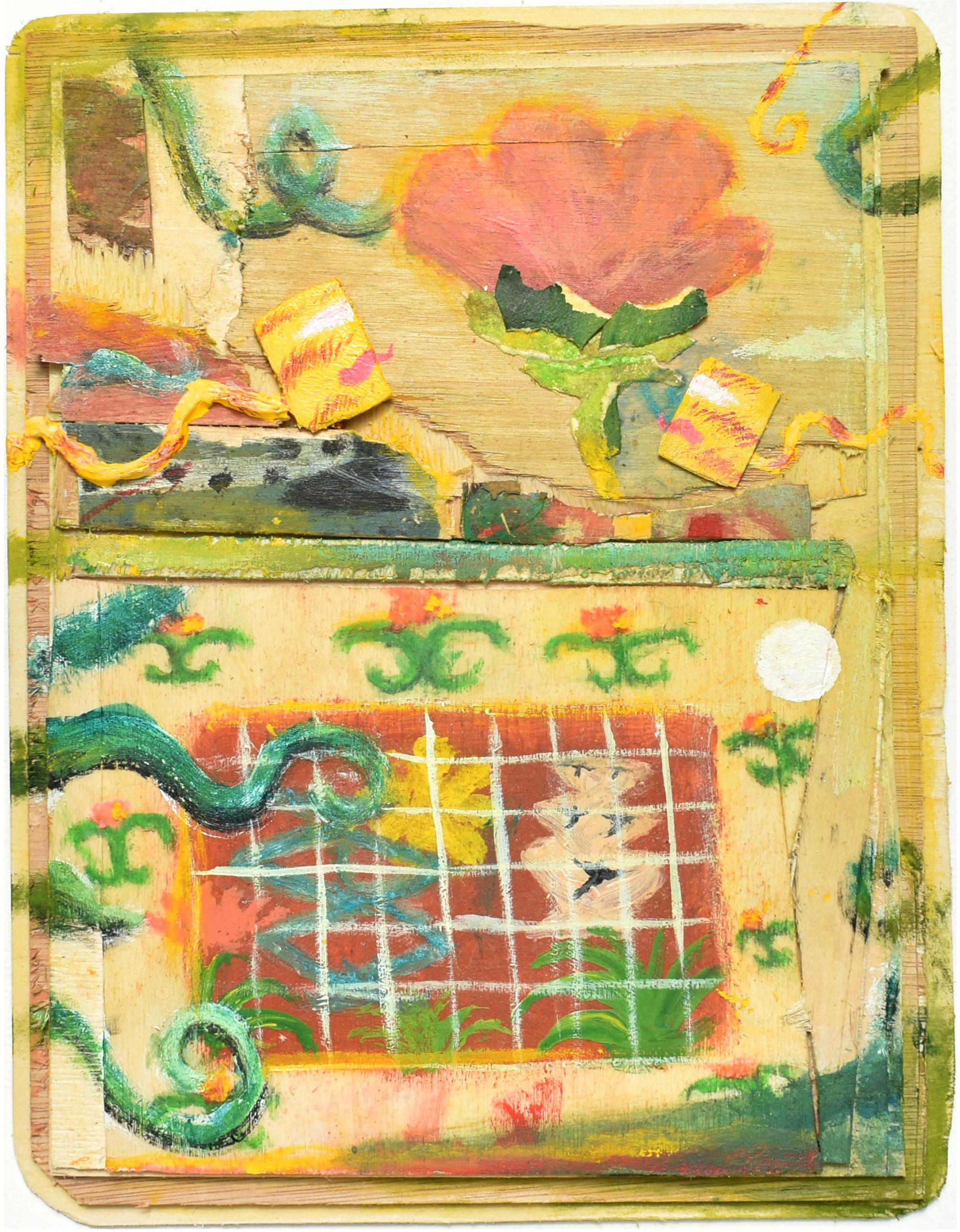
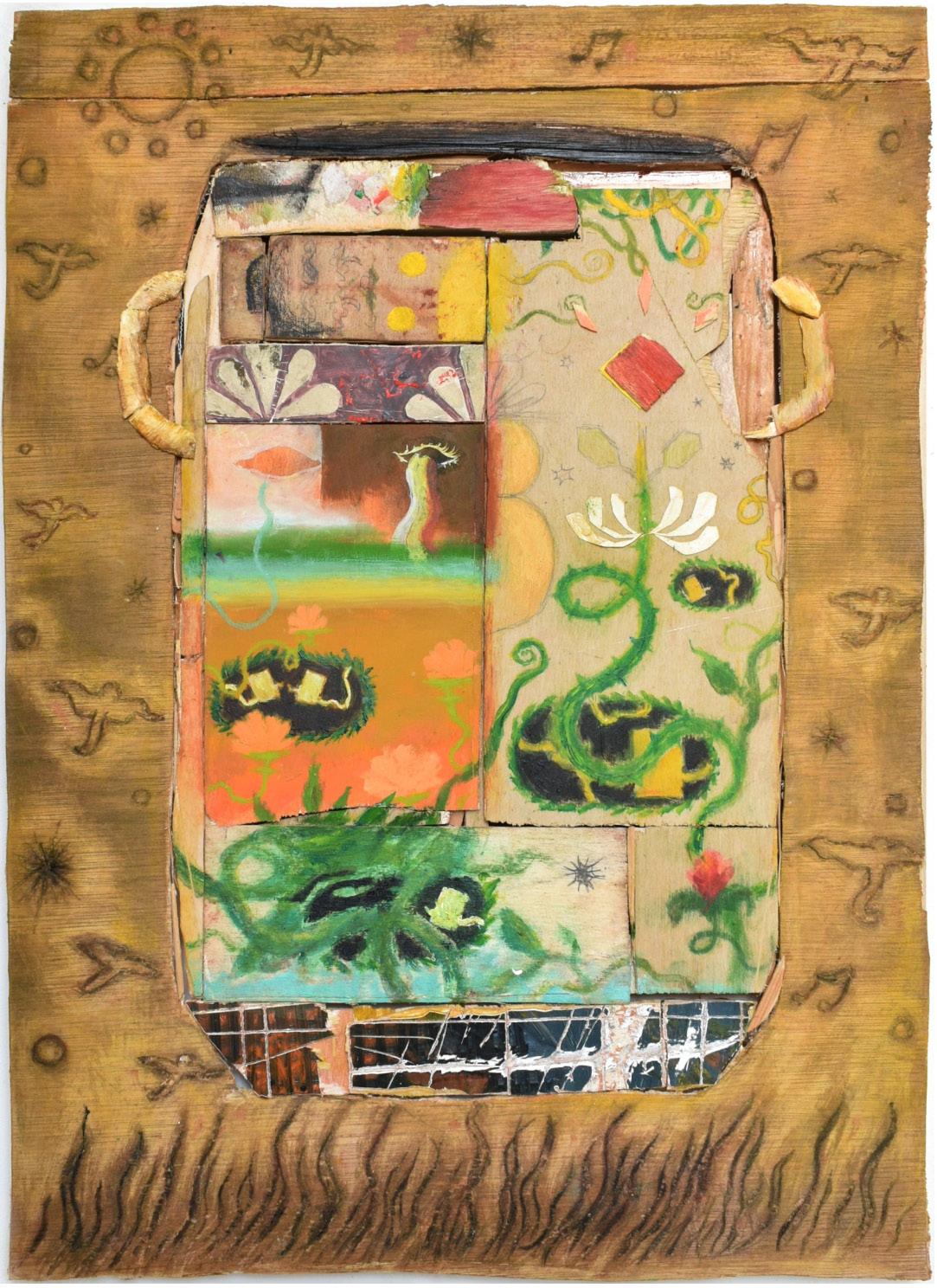
Making paintings as a relative youngster after I left Camberwell School of Art in 1990 was quite lonely within my own generation. (Funnily enough, Emma Hill had bought two small landscape paintings of mine at my degree show; clouds like airships, dark grounds saturated with water. Images led by JG Ballard’s short stories.)
Despite this intoxicating early success, and I didn’t realize this at the time, there had been a shift during those years at Camberwell. While there were exceptions up and down the country in colleges that stuck to a celebration of what I call slow-burn image making, painting was being questioned by and large in London as a medium. Even on a designated Fine Art Painting course like mine, painters became marginalized, and despite painterly inspiration coming from Germany in the eighties and some stand out exhibitions in London, many of the young cohort of tutors were being recruited from non-painting disciplines and as a result, most of my peer group had side-stepped into an installation-based practice. This shift was hugely influenced by Damien Hirst’s first Young British Artist show called Freeze in the old fire station at Surrey Docks in London’s Docklands in 1988 with fellow students from Goldsmith’s. Largely through non-painting or pun-painting, the YBA’s grew as a creative phenomenon and became hugely influential, joining the art establishment through museum shows, and a whole tranche of commercial galleries and art magazines sprouted up around them.
Painterly painting had struggled to get traction in the UK amongst the noise of the Brit Pack, with the exception of a few artists and younger art gallerists born around the sixties, who kept the flame alive and held what seemed like a rear guard action against the quick fix and bon mots of the YBA’s. Painters, Peter Doig especially, Merlin James, Chris Ofili, Chantal Joffe, Elizabeth Magill and later Andrew Cranston were all artists defying the trend, ignoring the painting is dead pronouncements by art tutors with grudges, and the curators, gallerists, critics and collectors who had signed up for the new vein of brashness in the UK. And these artists were supported by a few establishment galleries like Victoria Miro, Anthony d’Offay and Annely Juda, and a younger group of gallerists like the Wilkinsons, Emma Hill, The Approach and Ingleby, to name a few.
But not until the knock on effects of the sub-prime sell-off filtered through to the UK, (over twenty years after Hirst’s YBA Freeze show) did the global financial crisis in 2008 open the doors to a quieter and more reflective form of making pictures. Almost overnight a public craving for meaning in art injected a renewed interest in and resurgence of image making. Suddenly it was cool to be painting! We no longer had to hide or feel embarrassed about our work and we were released from the straight jacket of descriptions about our pictures. Many fellow painters at last felt less marginalized. Poetry, or the poetic in painting was back, after it had seemingly been banished for a whole generation or two. At last it seemed, you didn’t need a sheet of
foolscap to write down an explanation of a work beside it!
And this at root is what this show is all about. OneThingTouchesAnother celebrates painterly painting and painterly slow-burn thinking. The artists selected here let onlookers make up their own minds about what might be happening within a work. Their worlds are quiet, while often deeply connected to society and how we live, and touch profoundly on what it is to experience the primordial soup of life. We see here a bunch of 41 British artists celebrating experiences around what it is like to be human, in this delicious, paint-infused, parallel-universe language.
There are of course links to be made between painters influencing each other as teachers and pupils (Doig and Cranston/ Jackowski and Walter/ Hammick and Maple), as friends, and as painter-heroes. Almost to a tee, all the artists here in One Thing Touches Another revere Prunella Clough as a painter’s painter with her post-war pared down vision of the nuts and bolts of experiential existence. And with Clough there has been a proliferation of exhibitions with her work at the center of them, most recently ‘The Street,’ curated by Peter Doig at Gagosian New York earlier this year. Her work, beyond being a keystone of post-war British Art, is at last in ascendency internationally.
If only we could have had longer to choose artists for this show. And on reflection, since the crates went off to Maya Frodeman’s gallery, there are painters I wish we had included. But this grouping together came about as stepping stones with an almost universal agreement once we started studio and gallery visits between myself and Emma Hill. One painter led to another, and I am so looking forward to making some sense of my own artistic identity as a man of far-off mixed ancestry living in Britain in the grouping of this strange painterly osmosis.
What a vision of Maya Frodeman and her team to host this band of artists from the other side of a far-off ocean! The shipment’s journey, reimagined in my head as a curving arrow behind a plane decal across a map of nearly half the globe, reminds me of a time in the nineteenth century when so much mass and often forced migration seeped out beyond these shores in slow time to ports like Boston and New York and onwards, the draw of The West luring our ancestors onto wagon trains to California. Some of those old-timers ended their journey in the beauty and majesty of Wyoming. For us, to have an exhibition out on the edge of the Rockies, with all our back stories of home being shared amongst our American cousins, arcs the yearning of time and place and home back and forward across two centuries.
Tom Hammick London, 2025
EILEEN AGAR: Image courtesy the Artist’s Estate and Eagle Gallery / EMH Arts, London
REMI AJANI: Image courtesy the Artist and Sid Motion, London
KAROLINA ALBRICHT: Image courtesy the Artist
NED ARMSTRONG: Image courtesy the Artist
CHARLES AVERY: Image courtesy the Artist, Grimm, and Ingleby, Edinburgh
BASIL BEATTIE: Image courtesy the Artist and Hales London and New York
MARIA CHEVSKA: Image courtesy the Artist
PRUNELLA CLOUGH: Image courtesy the Artist’s Estate and Austin Desmond Fine Art, London. Photography by Colin Mills
ANDREW CRANSTON: Images courtesy the Artist, Glasgow Print Studio and Ingleby, Edinburgh
MARTYN CROSS: Image courtesy the Artist and Hales London and New York, and Marianne Boesky Gallery. © Martyn Cross. Photography by Phoebe d’Heurle
DENISE DE CORDOVA: Image courtesy the Artist and Eagle Gallery / EMH Arts, London
JOSEPH DILNOT: Images courtesy the Artist
PETER DOIG: Images courtesy the Artist
JAMES FISHER: Images courtesy the Artist and Eagle Gallery / EMH Arts, London
NICK GOSS: Image courtesy the Artist and Josh Lilley, London. Photography by Ben Westoby / Fine Art Documentation
PHIL GOSS: Image courtesy the artist
SUSIE HAMILTON: Images courtesy the Artist and Paul Stolper, London. Photography Jackson Pearce White
TOM HAMMICK: Image courtesy the Artist
MARCUS HARVEY: Image courtesy the Artist
CELIA HEMPTON: Image courtesy the Artist and Phillida Reid, London
ROGER HILTON: Image courtesy the Artist and Austin Desmond Fine Art, London. Photography by Colin Mills.
PAUL HOUSLEY: Images courtesy the Artist
ANDRZEJ JACKOWSKI: Images courtesy the Artist and Purdy Hicks Gallery
MERLIN JAMES: Images courtesy the Artist and Sikkema Jenkins, New York
KEN KIFF: Image courtesy the Artist’s Estate and Hales London and New York. © The Estate of Ken Kiff. All rights reserved, DACS 2025. Photography by Damian Griffiths
DEBORAH LERNER: Images courtesy the Artist, Apollo Painting School and Alice Amati, London.
Photography by Tom Carter
JOHN MACLEAN: Images courtesy the Artist and The Approach, London. Photography by Michal Brezinski
ELIZABETH MAGILL: Image courtesy the Artist, Anthony Wilkinson Gallery and Annely Juda Fine Art, London. Photography by Hugo Glendinning
KATHRYN MAPLE: Image courtesy the Artist and Bo Lee and Workman, Bruton, UK
SCOTT MCCRACKEN: Image courtesy the Artist. Photography by Benjamin Deakin
JEFF MCMILLAN: Image courtesy the Artist
MARGARET MELLIS: Images courtesy the Artist’s Estate and Redfern Gallery, London
ROY OXLADE: Image courtesy Alison Jacques, London © Estate of Roy Oxlade. Photography by Michael Brzezinski
CAROL RHODES: Image courtesy Carol Rhodes Estate
DAN ROACH: Images courtesy the Artist and Eagle Gallery / EMH Arts, London
LORNA ROBERTSON: Image courtesy the Artist, Ingleby, Edinburgh and Alison Jacques, London. Photography by Eva Herzog Studio
WILLIAM SCOTT: Image courtesy the Artist’s Estate and Austin Desmond Fine Art, London. Photography by Colin Mills
MYRA STIMSON: Image courtesy the Artist, photography by Benjamin Deakin
GRAEME TODD: Images courtesy Estate of Graeme Todd and Andrew Mummery
PHOEBE UNWIN: Images courtesy the Artist and Amanda Wilkinson, London
ALICE WALTER: Images courtesy the Artist
